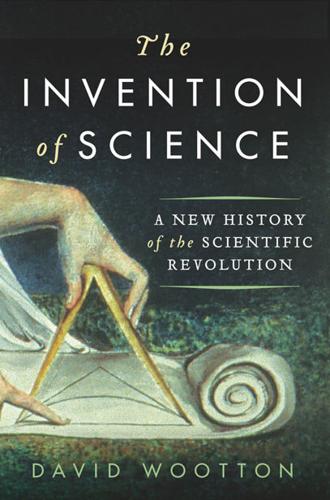
The Invention of Science: A New History of the Scientific Revolution
by
David Wootton
Published 7 Dec 2015
For Koyré, it was, following on Gaston Bachelard’s concept of an ‘epistemological break’, identified with a single intellectual mutation: the replacement of the Aristotelian idea of place (in which there was always an up and a down, a left and a right) by a geometrical idea of space, a substitution which made possible, he argued, the invention of the idea of inertia, which was the foundation of modern physics.11 Koyré had a vast influence in America, and his Bachelardian conception of an intellectual mutation was adopted by Thomas Kuhn in The Structure of Scientific Revolutions. Laski and Butterfield had a comparable influence in England on works such as Rupert Hall’s The Scientific Revolution (1954), which denied any connection between the Scientific and Industrial revolutions, and J. D. Bernal’s Science in History, whose second volume, The Scientific and Industrial Revolutions (1965), insisted on the closeness of the connection.
…
The most influential arguments in favour of relativism flow from the philosophy of Ludwig Wittgenstein (1889–1951).xliv Wittgenstein taught in Cambridge on and off from 1929 to 1947 – he left the year before Butterfield lectured on the Scientific Revolution – but it would never have occurred to Butterfield that he needed to consult Wittgenstein, or indeed any other philosopher, to learn how to think about science. It was not until the late 1950s, following the publication of the Philosophical Investigations in 1953, that arguments drawn from Wittgenstein began to transform the history and philosophy of science; their influence can already be seen, for example, in Thomas Kuhn’s The Structure of Scientific Revolutions.72 Thereafter it became common to claim that Wittgenstein had shown that rationality was entirely culturally relative: our science may be different from that of the ancient Romans, but we have no grounds for claiming that it is better, for their world was utterly unlike ours.
…
It may be hard to believe, but proponents of the strong programme have acquired a dominant position within the history of science. The most striking example of this approach in action is Steven Shapin and Simon Schaffer’s Leviathan and the Air-pump (1985), generally acknowledged as the most influential work in the discipline since Thomas Kuhn’s Structure of Scientific Revolutions.xlix The new history of science offered, in Steven Shapin’s phrase, a social history of truth.l Scientific method, it was now argued, kept changing, so that there was no such thing as the scientific method: a famous book by Paul Feyerabend was entitled Against Method,li its catchphrase ‘Anything goes’; it was followed by Farewell to Reason.78 Some philosophers and nearly all anthropologists agreed: standards of rationality were, they insisted, local and highly variable.79 But we must reject the Wittgensteinian notion that truth is simply consensus, a notion incompatible with an understanding of one of the fundamental things science does, which is to show that a consensus view must be abandoned when it is at odds with the evidence.lii The classic text here is Galileo’s ‘Letter to Christina of Lorraine’ (1615) in defence of Copernicanism.

The Age of Entitlement: America Since the Sixties
by
Christopher Caldwell
Published 21 Jan 2020
A year-and-a-half after the assassination, the musicians who would form Jefferson Airplane, the Grateful Dead, Big Brother and the Holding Company, and various other druggie blues and folk-rock bands were playing their first gigs together in San Francisco. This does not mean that the assassination “caused” the decade’s cultural upheaval. The months before Kennedy’s death had already seen the publication of Thomas Kuhn’s book The Structure of Scientific Revolutions (August 1962), which upended notions about science’s solidity and a lot of social and political assumptions built on it; Rachel Carson’s exposé of pesticides, Silent Spring (September 1962); and The Feminine Mystique (February 1963), Betty Friedan’s attack on what she saw as the vapidity of well-to-do housewives’ existence.
…
“who would enrich diversity”: Kate Sinclair, “Student Demands: Who’s Resigned, What’s Renamed,” New York Times, February 3, 2016. “more just and inclusive campus”: Jonathan Haidt and Lee Jussim, “Hard Truths About Race on Campus,” Wall Street Journal, May 6, 2016. “A new scientific truth”: Max Planck, Scientific Autobiography and Other Papers (New York: Philosophical Library, 1949), 33–34. Quoted in Thomas Kuhn, The Structure of Scientific Revolutions, 3rd ed. (Chicago: University of Chicago Press, 1996 [1962]), 151n. By the new century: Emily Cohn, “Tom Jones Reflects on a ‘Selfless Revolution,’ ” Cornell Daily Sun, April 16, 2009. “deny fascists, organized racists”: From the group Hope Not Hate (UK). Quoted in William Voegeli, “Unsafe Spaces,” Claremont Review of Books, Winter 2015–2016, 8–14.

Whiplash: How to Survive Our Faster Future
by
Joi Ito
and
Jeff Howe
Published 6 Dec 2016
By December 1941, nylon hose had captured 30 percent of the American market, one of the greatest consumer product success stories of all time.7 Disobedience, especially in crucial realms like problem solving, often pays greater dividends than compliance. Innovation requires creativity, and creativity—to the great frustration of well-meaning (and not so well-meaning) managers—often requires freedom from constraints. We can actually go further. As Thomas Kuhn showed in his landmark book The Structure of Scientific Revolutions, new paradigms almost invariably come into being because some scientist didn’t embrace the dominant idea.8 In other words, the rule about great scientific advances is that to make them you have to break the rules. Nobody has ever won a Nobel Prize by doing what they’re told, or even by following someone else’s blueprints.
…
op=1#ixzz3QikI1PWu. 8 David Lieberman, “CEO Forum: Microsoft’s Ballmer Having a ‘Great Time,’” USA Today, April 30, 2007, http://usatoday30.usatoday.com/money/companies/management/2007-04-29-ballmer-ceo-forum-usat_N.htm. 9 Michel Foucault, The Archaeology of Knowledge (New York: Pantheon, 1972). 10 Thomas S. Kuhn, The Structure of Scientific Revolutions: 50th Anniversary Edition (University of Chicago Press, 2012). 11 Ibid. 12 Daniel Šmihula, “The Waves of the Technological Innovations,” Studia Politica Slovaca, issue 1 (2009): 32–47; Carlota Perez, Technological Revolutions and Financial Capital: The Dynamics of Bubbles and Golden Ages (Northampton, MA: Edward Elgar Publishing, 2002). 13 Frank J.
…
Hounshell and John Kenly Smith, Science and Corporate Strategy: Du Pont R and D, 1902–1980 (Cambridge University Press, 1988). 2 Pap Ndiaye, Nylon and Bombs: DuPont and the March of Modern America (Baltimore: JHU Press, 2007). 3 Hounshell and Smith, Science and Corporate Strategy. 4 Ibid. 5 Gerard Colby, Du Pont: Behind the Nylon Curtain (Englewood Cliffs, NJ: Prentice-Hall [1974], 1974). 6 Hounshell and Smith, Science and Corporate Strategy. 7 “Wallace Carothers and the Development of Nylon: National Historic Chemical Landmark,” American Chemical Society, n.d., http://www.acs.org/content/acs/en/education/whatischemistry/landmarks/carotherspolymers.html. 8 Thomas S. Kuhn, The Structure of Scientific Revolutions: 50th Anniversary Edition, (University of Chicago Press, 2012). 9 Zachary Crockett, “The Man Who Invented Scotch Tape,” Priceonomics, December 30, 2014, http://priceonomics.com/the-man-who-invented-scotch-tape/. 10 Tim Donnelly, “9 Brilliant Inventions Made by Mistake,” Inc.com, August 15, 2012, http://www.inc.com/tim-donnelly/brilliant-failures/9-inventions-made-by-mistake.html. 11 David R.
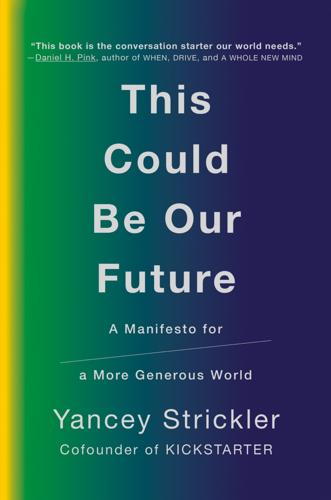
This Could Be Our Future: A Manifesto for a More Generous World
by
Yancey Strickler
Published 29 Oct 2019
Bentoism Elizabeth Anderson, Value in Ethics and Economics Michael Walzer, Spheres of Justice: A Defense of Pluralism and Equality How Ideas Work Yuval Noah Harari, Sapiens: A Brief History of Humankind John Higgs, The KLF: Chaos, Magic, and the Band Who Burned a Million Pounds John Higgs, Stranger Than We Can Imagine: An Alternative History of the 20th Century Thomas Kuhn, The Structure of Scientific Revolutions Daniel Rodgers, Age of Fracture J. Z. Young, Doubt and Certainty in Science: A Biologist’s Reflections on the Brain Economics Rutger Bregman, Utopia for Realists: How We Can Build the Ideal World David Graeber, Debt: The First 5,000 Years (Updated and Expanded) Annie Lowrey, Give People Money: How a Universal Basic Income Would End Poverty, Revolutionize Work, and Remake the World Mariana Mazzucato, The Entrepreneurial State: Debunking Public vs.
…
The optimist’s argument for exercise, organic food, and recycling would be that these are also Kondratiev wave–like trends. The first thirty years were spent creating the infrastructure and doing normal science. The next thirty years will be spent getting those behaviors to full capacity as the new norms. Two other important sources of background on this area are Thomas Kuhn’s book The Structure of Scientific Revolutions and J. Z. Young’s book Doubt and Certainty in Science. Kuhn’s book is tremendous in its description of how paradigms and “normal science”—the process by which we test and build out a new way of seeing—create new approaches to knowledge. J. Z. Young, a biologist, explains in vivid and compelling detail how our brains learn and acquire new knowledge.
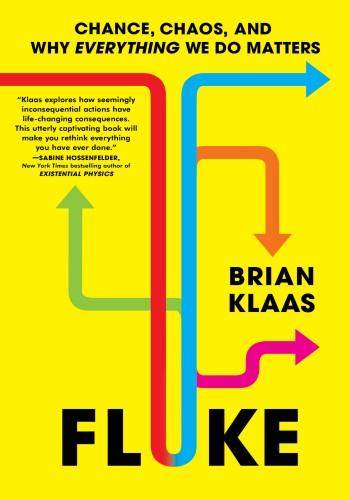
Fluke: Chance, Chaos, and Why Everything We Do Matters
by
Brian Klaas
Published 23 Jan 2024
When done properly, scientific discovery moves forward by relentless testing, unfeeling and unswayed by personalities or politics. Ideas go through gladiator-style combat in the scientific arena, and only those that survive unscathed live to be tested again. By contrast, Thomas Kuhn, who wrote The Structure of Scientific Revolutions in 1962, argued that scientists, like all of us, have prejudices and biases. Individual scientists have an established set of beliefs, they believe in certain theories, and they devote their professional lives to proving those views right. But when scientific theories are wrong, the cracks eventually get exposed despite the best efforts of researchers who want to protect their pet hypotheses.
…
jettisoning flawed theories through falsification: Karl Popper, The Logic of Scientific Discovery (Abingdon, Oxfordshire, UK: Routledge, 2002). For a rival view, see Michael Strevens, The Knowledge Machine: How an Unreasonable Idea Created Modern Science (New York: Penguin, 2022). The Structure of Scientific Revolutions: Thomas Kuhn, The Structure of Scientific Revolutions: 50th Anniversary Edition (Chicago: University of Chicago Press, 2012). few scientists even took notice: U. Marvin, “The British Reception of Alfred Wegener’s Continental Drift Hypothesis,” Earth Sciences History 4 (2) (1985): 138–59. Abraham Ortelius: J. Romm, “A New Forerunner for Continental Drift,” Nature 367 (6462) (1994): 407–8.
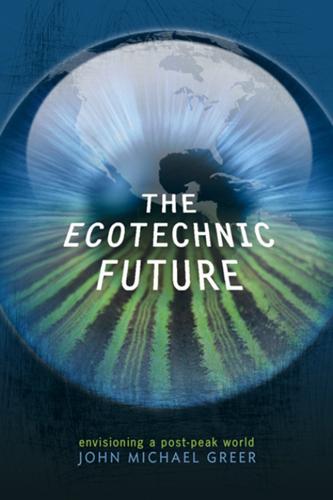
The Ecotechnic Future: Envisioning a Post-Peak World
by
John Michael Greer
Published 30 Sep 2009
The inner life of emotions and meanings is among the things the scientific method handles poorly — it is very hard to quantify an emotion — and this blindness is particularly marked when it comes to the narratives that have gathered around science itself. Thomas Kuhn pointed out in his celebrated book The Structure of Scientific Revolutions that each branch of science rests on a set of paradigms that go unquestioned, and often unnoticed, except in those revolutionary periods when the gap between the paradigm and the evidence forces itself into view.9 What he did not discuss, and only a few of the sociologists of science have explored, is the extent to which those paradigms unfold from exactly that nonrational sphere of human life which science itself analyzes so ineffectively.10 The scientific method, after all, is simply a set of practical tools for studying nature.
…
James McClenon, Deviant Science: The Case of Parapsychology, University of Pennsylvania Press, 1984, offers a useful case study of the split between inquiry and ideology in modern scientific research. 8. See Roger Penrose, The Emperor’s New Mind: Concerning Computers, Minds, and the Laws of Physics, Oxford University Press, 1989, for a thoughtful discussion. 9. Thomas Kuhn, The Structure of Scientific Revolutions, University of Chicago Press, 1962. 10. McClenon, Deviant Science. Chapter Thirteen: The Ecotechnic Promise 1. See, for example, Timothy Burns, ed., After History? Francis Fukuyama and his Critics, Rowman and Littlefield, 1994. 2. “We are history’s actors ...when we act, we create our own reality.”

Green Swans: The Coming Boom in Regenerative Capitalism
by
John Elkington
Published 6 Apr 2020
The aim has been to communicate one unvarying message, that deep-seated changes are afoot, that they have major implications for the business and its stakeholders, and that they hint at even deeper trends. The term “paradigm shift” is often misunderstood, but that is what is now underway. Indeed, if I had to name the single book that had the biggest impact on my own early thinking, it would be Thomas Kuhn’s 1962 book, The Structure of Scientific Revolutions. I read it a year or two after its first publication, when I must have been fourteen or fifteen, and it totally changed the way I saw the world. Kuhn’s focus was on science. He compared the worlds of biology and evolution, on the one hand, and, on the other, of wider science and technology.
…
The key thing, though, was that this was the moment where I truly woke up to the fact that one of the people I admired most was operating in one paradigm while I was stepping into another. I had read about such things, of course. Indeed, as already mentioned, I used to say that the book that most influenced my young mind was Thomas Kuhn’s The Structure of Scientific Revolutions, which I had read at school in my early teens.4 This long-ago conversation made paradigm shifting personal. At what point, I wondered, would I suffer from the same fate, finding myself trapped in a fading reality while new realities bubbled up all around—in younger minds than mine?
…
That is now what we must do with capitalism, democracy, and the much more recent sustainability agenda. That will happen most rapidly where two things happen: first, the new order bubbles up from the bottom, from the edges of the system, and second, where the overarching paradigm shifts. We briefly explored the “Kuhn Cycle” in Chapter 4. Thomas Kuhn’s book The Structure of Scientific Revolutions may feel a bit tired when encountered these days, but it was revolutionary back in the 1960s when I first read it. I sense that we are now moving toward the late stages of the next paradigm shift, a process that will have transformative impact on how most of us think, prioritize, and act.
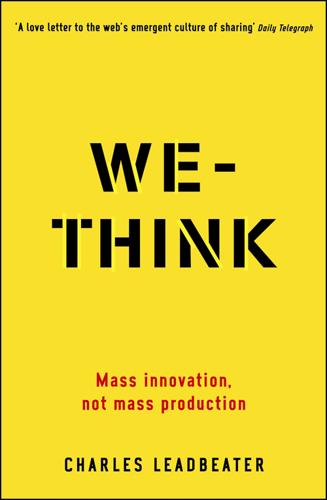
We-Think: Mass Innovation, Not Mass Production
by
Charles Leadbeater
Published 9 Dec 2010
González-Barahona, Gregorio Robles-Martínez and Israel Herráiz-Tabernero, ‘Measuring Libre Software Using Debian 3.1 (Sarge) as a Case Study: Preliminary Results’, UPGRADE6.3, June 2005. Available from http://www.upgrade-cepis.org/ issues/2005/3/up6-3Amor.pdf 10 Steven Weber, The Success of Open Source (Cambridge, MA/London: Harvard University Press, 2004) 11 Thomas Kuhn, The Structure of Scientific Revolutions (University of Chicago Press, 1962), p. 10 12 Richard K. Lester and Michael Piore, Innovation: The Mission Dimension (Cambridge, MA/London: Harvard University Press, 2004) 13 Andrew Hargadon, How Breakthroughs Happen (Boston, MA: HBS Press, 2003) 14 James Surowiecki, The Wisdom of Crowds (Little, Brown, 2004) 15 Scott E.

The Invention of Air: A Story of Science, Faith, Revolution, and the Birth of America
by
Steven Johnson
Published 26 Dec 2008
And they were all fundamentally correct, at least in their contention that class identity, capital, and technological acceleration would be prime movers in the coming centuries, and that each one had an independent life, outside the direct control of human decision-makers. Humans made the steam engine, but the steam engine ended up remaking humanity, in ways that the original inventors never anticipated. The contemporary view of intellectual progress is dominated by one book: Thomas Kuhn’s The Structure of Scientific Revolutions, published in 1962, from which the now conventional terms “paradigm” and “paradigm shift” originate. By some measures, Kuhn’s book was the most cited text in the last quarter of the twentieth century, and it regularly ranks among the most influential books of the entire century.

From Airline Reservations to Sonic the Hedgehog: A History of the Software Industry
by
Martin Campbell-Kelly
Published 15 Jan 2003
See also Jonathan Richardson, “A Decade of CAD,” CAD User, March 1998: 20–22, 26, 28. 22. Walker, The Autodesk File, p. 24 23. Ibid., p. 299. 24. Ibid., pp. 296–304. 25. The concepts of paradigm shift, technological closure, and critical problems are informed by the works of Thomas Kuhn, Thomas Parke Hughes, and Nathan Rosenberg, among others. See Thomas Kuhn, The Structure of Scientific Revolutions (University of Chicago Press, 1962); Thomas Parke Hughes, Networks of Power: Electrification in Western Society, 1880–1930 (Johns Hopkins University Press, 1983); Nathan Rosenberg, Inside the Black Box: Technology and Economics (Cambridge University Press, 1982). 26. Douglas K.

Break Through: Why We Can't Leave Saving the Planet to Environmentalists
by
Michael Shellenberger
and
Ted Nordhaus
Published 10 Mar 2009
Gore neglects to mention that the Democrats actually held both houses of Congress for the first two years of the Clinton presidency—the period in which presidents tend to achieve much of their agendas (this was the period President George W. Bush pushed through his tax cuts). [back] 12. Thomas Kuhn, The Structure of Scientific Revolutions (Chicago: Lawrence Van Gelder, 1962); “Obituary: Thomas Kuhn, 73; Devised Science Paradigm,” New York Times, June 19, 1996. [back] 13. This point was eloquently made in Jeffrey L. Kasser’s cogent lectures on the philosophy and history of science in The Philosophy of Science: Kuhn and the Challenge of History, available on DVD from the Teaching Company, 2006.

Overdosed America: The Broken Promise of American Medicine
by
John Abramson
Published 20 Sep 2004
How else can we explain the widespread agreement that statins or the new antidepressants or the COX-2 inhibitors are genuine breakthroughs that will preserve and restore our health in ways never before possible? These are our myths, merging science and hope into our shared belief. It is exactly myths such as these that Thomas Kuhn was referring to in his groundbreaking book The Structure of Scientific Revolutions, published in 1962. Kuhn coined the term “paradigm” to describe the unspoken professional values, beliefs, and techniques shared by a community of scientists or professionals. The shared paradigm then defines the range of problems that are legitimate to investigate, the range of legitimate solutions, and the criteria that justify belief that the findings are true.
…
As they are themselves our ultimate framework, they are essentially inarticulable.” Quoted in Jan Golinski, Making Natural Knowledge: Constructivism and the History of Science, Cambridge, England: Cambridge University Press, 1998, p. 17. 203 shared paradigm defines the range: Thomas Kuhn, The Structure of Scientific Revolutions, Chicago: University of Chicago Press, 1962, pp. 64–65. 203 criteria that justify belief: Susan Haack, Evidence and Inquiry: Towards Reconstruction in Epistemology, Oxford: Blackwell Publishers, 1993, p. 206. 204 “The Need for a New Medical Model: G. L. Engel, “The Need for a New Medical Model: A Challenge for Biomedicine,” Science 196:129–136, 1977. 204 “half of all deaths: A.
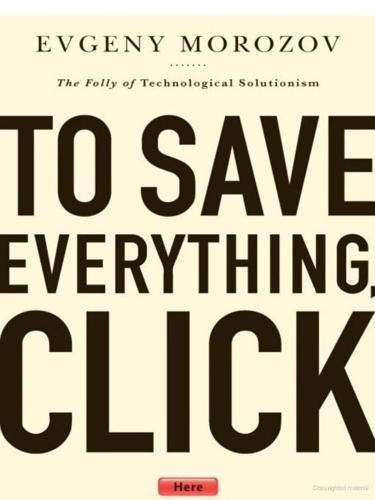
To Save Everything, Click Here: The Folly of Technological Solutionism
by
Evgeny Morozov
Published 15 Nov 2013
(Indianapolis: Liberty Fund, 1991), 52. 10 “A cook . . . is not a man who first has a vision of a pie”: Michael Oakeshott, “The Idea of a University,” Academic Questions 17, no. 1 (2004): 23. 10 “the book speaks only to those who know already”: Oakeshott, “Political Education.” 11 what’s going on in our kitchens: this section draws considerably on an earlier article of mine: Evgeny Morozov, “Stay Out of My Kitchen, Robots,” Slate, August 27, 2012, http://www.slate.com/articles/technology/future_tense/2012/08/why_you_don_t_want_a_robot_in_your_kitchen.html. 11 British magazine New Scientist recently covered: Jacob Aron, “Smart Kitchens Keep Novice Chefs on Track,” New Scientist 215, no. 2877 (August 11, 2012): 17, http://www.newscientist.com/article/mg21528774.900-augmented-reality-kitchens-keep-novice-chefs-on-track.html. 11 “For example, if the system detects sugar pouring into a bowl”: ibid. 14 “life, the universe and everything”: reference to Douglas Adams, Life, the Universe and Everything (Los Angeles, CA: Del Rey, 1995). 14 In the afterword to my first book, The Net Delusion: Morozov, The Net Delusion, 337. 14 French philosopher Bruno Latour: Bruno Latour, The Pasteurization of France (Cambridge, MA: Harvard University Press, 1993), 15. 15 What Would Google Do?: Jeff Jarvis, What Would Google Do?, 1st ed. (New York: HarperCollins, 2009). 16 Following the work of Latour and Thomas Kuhn: see Bruno Latour, Science in Action (Cambridge, MA: Harvard University Press, 1987), and Thomas Kuhn, The Structure of Scientific Revolutions, 3rd ed. (Chicago: University of Chicago Press, 1996). Chapter 2: The Nonsense of “the Internet”—and How to Stop It 17 “The internet is not territory to be conquered”: Nicholas Mendoza, “Metal, Code, Flesh: Why we Need a ‘Rights of the Internet’ Declaration,” February 15, 2012, AlJazeera .com, http://www.aljazeera.com/indepth/opinion/2012/02/201228715322807.html. 17 “What made Blockbuster close?”
…
Porter, Karl Pearson: The Scientific Life in a Statistical Age (Princeton, NJ: Princeton University Press, 2005), 293. 136 “in the new political order”: quoted in Crick, In Defence of Politics, 73. 136 “Suppose the ‘arbitrariness’ which Saint-Simon”: ibid., 74. 136 following Thomas Kuhn’s work on scientific paradigms: Thomas S. Kuhn, The Structure of Scientific Revolutions, 3rd ed. (Chicago: University of Chicago Press, 1996). 136 much of the presumed unity is a myth: see Peter Galison and David Stump, eds., The Disunity of Science: Boundaries, Contexts, and Power, 1st ed. (Palo Alto, CA: Stanford University Press, 1996). 137 “rescue mankind from the lack of certainty”: Crick, In Defense of Politics, 70. 137 “everything in society is . . . capable”: ibid., 71. 137 “one of the most important components”: quoted in Robert D.
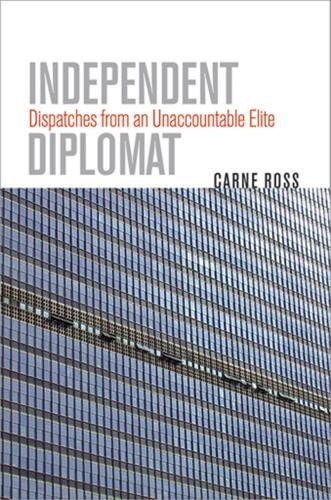
Independent Diplomat: Dispatches From an Unaccountable Elite
by
Carne Ross
Published 25 Apr 2007
We needed a new name that incorporated the key concepts of MOnitoring, Verification,Inspection and Commission. UNMOVIC was the construction which, after several hours of crossword-like pondering, I came up with. 3 For the full text go to www.securitycouncilreport.org/atf/cf/%7B65BFCF9B-6D27-4E9C-8CD3-CF6E4FF96FF9%7D/ 4 Thomas S. Kuhn, The Structure of Scientific Revolutions, University of Chicago Press, 3rd edn, 1996. 5 I would suggest that a classic example of this phenomenon, examined in chapter 2, is that of the break-up of Yugoslavia. It was not only the massacre of Srebrenica that produced a shift in the view of that war as a “civil war”.

Human Frontiers: The Future of Big Ideas in an Age of Small Thinking
by
Michael Bhaskar
Published 2 Nov 2021
Science, knowledge, technology, art, business and politics don't always proceed with linear grace; instead periods of stasis are followed by eruptions of activity, fecund golden ages that glitter in the historical record. They are moments rich in big ideas, and good sources of inspiration in nailing down what those ideas are and how they work. Speaking of disjunctive leaps inevitably brings us to Thomas Kuhn's The Structure of Scientific Revolutions, the most cited work of social science in the twentieth century and populariser of the aforementioned term, the paradigm shift. Kuhn was interested in science's most revolutionary moments, in other words its big ideas: Copernicus and his heliocentric model of the solar system; Lavoisier's oxygen theory of combustion; Einstein wrenching physics from Newton's grip.
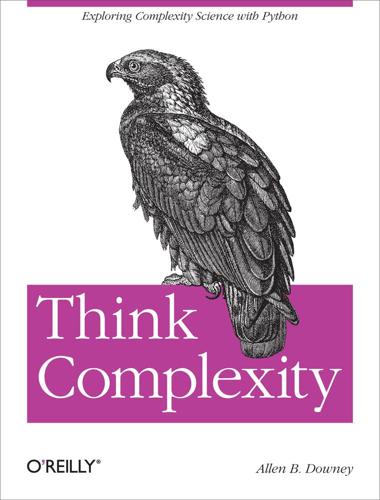
Think Complexity
by
Allen B. Downey
Published 23 Feb 2012
But as I will try to demonstrate, these models do useful work, including prediction, explanation, and design. One of the goals of this book is to explain how. Paradigm Shift? When I describe this book to people, I am often asked if this new kind of science is a paradigm shift. I don’t think so, and here’s why. Thomas Kuhn introduced the term “paradigm shift” in The Structure of Scientific Revolutions in 1962. It refers to a process in the history of science where the basic assumptions of a field change, or where one theory is replaced by another. He presents as examples the Copernican revolution, the displacement of phlogiston by the oxygen model of combustion, and the emergence of relativity.
…
Forms of indeterminism include randomness, probabilistic causation, and fundamental uncertainty. We come back to this topic in the sections Determinism and Free Will. These trends are not universal or complete, but the center of opinion is shifting along these axes. As evidence, consider the reaction to Thomas Kuhn’s The Structure of Scientific Revolutions, which was reviled when it was published and is now considered almost uncontroversial. These trends are both cause and effect of complexity science. For example, highly abstracted models are more acceptable now because of the diminished expectation that there should be a unique, correct model for every system.
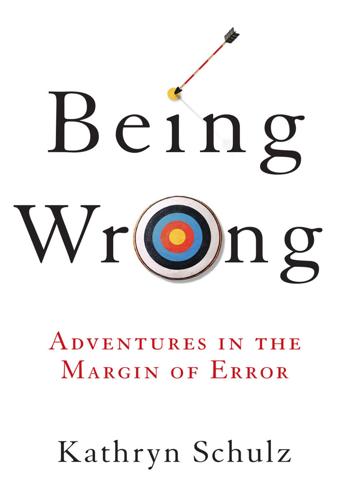
Being Wrong: Adventures in the Margin of Error
by
Kathryn Schulz
Published 7 Jun 2010
But the scientific method as we understand it today was introduced to the world through the work of Francis Bacon in his 1620 Novum Organum, and René Descartes in his 1637 Discourse on the Method. Whether or not this method has ever been practiced as such (that is, to what extent scientists, especially as individuals, seek to replicate experiments and falsify hypotheses) is an open question, as Thomas Kuhn made abundantly clear in The Structure of Scientific Revolutions. But my point here concerns the method as an intellectual ideal more than an actual practice. “For Satan himself.” The Bible, New International Version (HarperTorch, 1993), 2 Corinthians 11:14–15. errors as ignes fatui. Bates, 46. Pierre-Simon Laplace. Bates touches on this development toward the end of Enlightenment Aberrations (248), but my primary source here was Steven M.
…
David Hume. Hume lays out the problem of induction in his Enquiry Concerning Human Understanding (Oxford University Press, 2006). “the poverty of the stimulus” (FN). Chomsky describes this problem in his Rules and Representations (Columbia University Press, 2005). Thomas Kuhn. Thomas Kuhn, The Structure of Scientific Revolutions (The University of Chicago Press, 1996). The anecdote about Chinese and Western astronomers appears on p. 116. As Alan Greenspan pointed out. http://oversight.house.gov/documents/20081024163819.pdf “interpreting increased violence in Iraq.” George Packer, “History Boys,” the New Yorker, June 11, 2007.
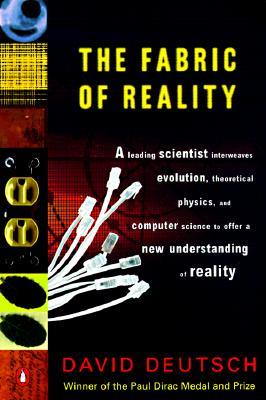
The Fabric of Reality
by
David Deutsch
Published 31 Mar 2012
DeWitt and Neill Graham (eds), The Many-Worlds Interpretation of Quantum Mechanics, Princeton University Press, 1973. Artur K. Ekert, 'Quantum Keys for Keeping Secrets', New Scientist, 16 January 1993. Freedom and Rationality: Essays in Honour of John Watkins, Kluwer, 1989. Ludovico Geymonat, Galileo Galilei: A Biography and Inquiry into his Philosophy of Science, McGraw-Hill, 1965. Thomas Kuhn, The Structure of Scientific Revolutions, University of Chicago Press, 1971. Imre Lakatos and Alan Musgrave (eds), Criticism and the Growth of Knowledge, Cambridge University Press, 1979. Seth Lloyd, 'Quantum-mechanical Computers', Scientific American, October 1995. Michael Lockwood, Mind, Brain and the Quantum, Basil Blackwell, 1989.
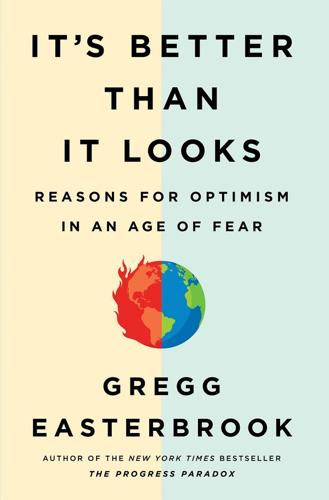
It's Better Than It Looks: Reasons for Optimism in an Age of Fear
by
Gregg Easterbrook
Published 20 Feb 2018
The case for rising temperature trends can be made, convincingly, from the Climate Change Science Program supervised by President George W. Bush, which in 2006 declared “clear evidence of human influences on the climate system.” The existence of a scientific consensus is not the same as the assurance of truth. Scientific consensus has been wrong before and will be wrong again. Thomas Kuhn’s 1962 book The Structure of Scientific Revolutions is well known for introducing the term “paradigm shift,” less known for warning that scientists may endorse whatever viewpoint will maximize their incomes. Climate researchers are more likely to be funded if they cry apocalypse, and act accordingly. But though not proof, the scientific consensus on climate change is a strong indicator.
…
In 2014, the National Academy of Sciences concluded: “Climate Change Evidence and Causes” (Washington, DC: National Academy of Sciences, 2014). from the Climate Change Science Program supervised by President George W. Bush: “Temperature Trends in the Lower Atmosphere” (Washington, DC: Climate Change Science Program, 2006). Thomas Kuhn’s 1962 book: Thomas Kuhn, The Structure of Scientific Revolutions (Chicago: University of Chicago Press, 1962). but NOAA does not detect any hiatus in data: Thomas Karl et al., “Possible Artifacts of Data Biases in Recent Global Surface Warming Hiatus,” Science, June 26, 2015. The Geophysical Fluid Dynamics Laboratory, a division of NOAA, said in 2017: “Global Warming and Hurricanes: An Overview of Current Research” (Princeton, NJ: Geophysical Fluid Dynamics Laboratory, 2017).
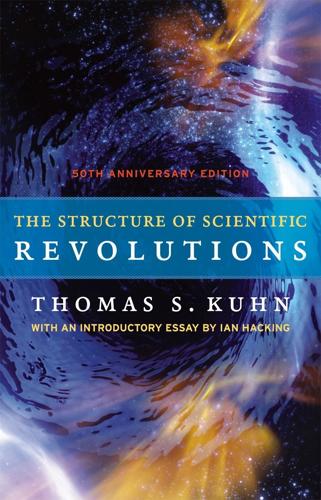
The Structure of Scientific Revolutions
by
Thomas S. Kuhn
and
Ian Hacking
Published 1 Jan 1962
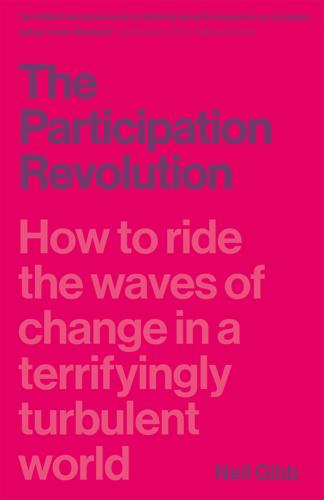
The Participation Revolution: How to Ride the Waves of Change in a Terrifyingly Turbulent World
by
Neil Gibb
Published 15 Feb 2018
It was this increasingly disruptive and unsettling transitional phase that the Luddites were caught up in. And it is the increasingly disruptive and unsettling transitional phase we are in now. The great transformation “Revolutions are inaugurated by a growing sense…that an existing paradigm has ceased to function adequately” Thomas Kuhn, The Structure of Scientific Revolutions Seventeen years after Sergey Brin and Larry Page first launched Google in their friend Susan Wojcicki’s garage in Menlo Park, California, HBO released the second season of Silicon Valley, its fictional comedy parodying the thriving industry that had grown out of those early garage start-ups.

Life at the Speed of Light: From the Double Helix to the Dawn of Digital Life
by
J. Craig Venter
Published 16 Oct 2013
Kouprina, J. Graves, X. N. Chen, J. R. Korenberg, and M. A. Resnick. “Specific cloning of human DNA as yeast artificial chromosomes by transformation-associated recombination.” Proceedings of the National Academy of Sciences 93, no. 1 (1996): pp. 491–96. Chapter 7 1. Thomas Kuhn. The Structure of Scientific Revolutions (Chicago: University of Chicago Press, 1962), pp. 84–85. 2. C. Lartigue, J. I. Glass, N. Alperovich, R. Pieper, P. P. Parmar, C. A. Hutchison III, H. O. Smith, and J. C. Venter. “Genome transplantation in bacteria: Changing one species to another.” Science 317, no. 5838 (August 3, 2007): pp. 632–38. 3.
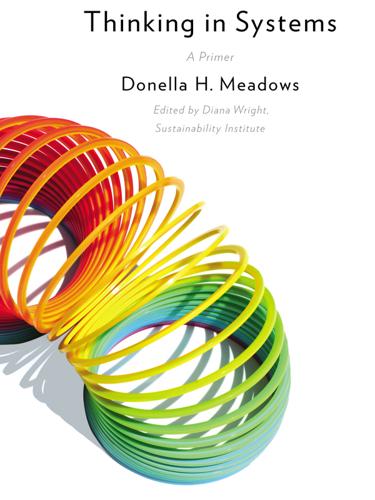
Thinking in Systems: A Primer
by
Meadows. Donella
and
Diana Wright
Published 3 Dec 2008
Meadows, Dynamics of Commodity Production Cycles (Cambridge, MA: Wright-Allen Press, Inc., 1970). 6. John Kenneth Galbraith, The New Industrial State (Boston: Houghton Mifflin, 1967). 7. Ralph Waldo Emerson, “War,” lecture delivered in Boston, March, 1838. Reprinted in Emerson’s Complete Works, vol. XI, (Boston: Houghton, Mifflin & Co., 1887), 177. 8. Thomas Kuhn, The Structure of Scientific Revolutions (Chicago: University of Chicago Press, 1962). Chapter Seven 1. G.K. Chesterton, Orthodoxy (New York: Dodd, Mead and Co., 1927). 2. For a beautiful example of how systems thinking and other human qualities can be combined in the context of corporate management, see Peter Senge’s book The Fifth Discipline: The Art and Practice of the Learning Organization (New York: Doubleday, 1990). 3.
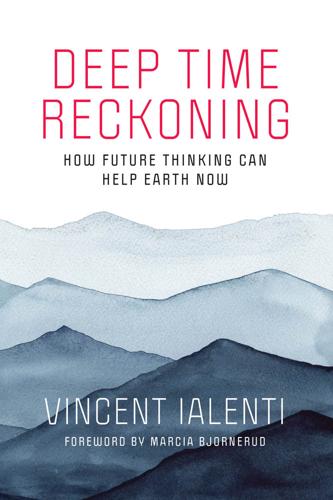
Deep Time Reckoning: How Future Thinking Can Help Earth Now
by
Vincent Ialenti
Published 22 Sep 2020
Case Pyhäjoki, “Artistic Reflections on Nuclear Influence,” Call for Participants, Bioart Society, May 31, 2013, https://bioartsociety.fi/projects/case-pyhajoki/posts/call-case-pyhajoki-artistic-reflections-on-nuclear-influence. 80. Newman, Digital News Report. 81. Ray Kurzweil, The Singularity Is Near: When Humans Transcend Biology (New York: Viking Press, 2005). 82. Thomas Kuhn, The Structure of Scientific Revolutions (Chicago: University of Chicago Press, 1969). 83. Brand, Clock of the Long Now. 1 HOW TO RIDE ANALOGIES ACROSS DEEP TIME 12020 CE: A solitary farmer looks out over her pasture, surrounded by a green forest of heath trees. She lives in a sparse land once called Finland, on a fertile island plot once called Olkiluoto.
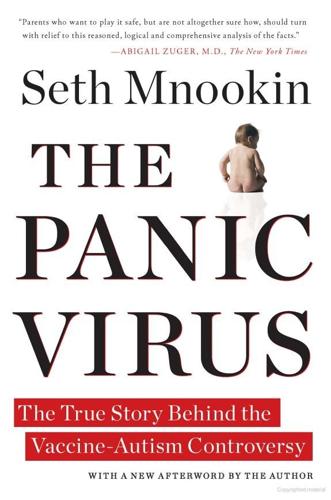
The Panic Virus: The True Story Behind the Vaccine-Autism Controversy
by
Seth Mnookin
Published 3 Jan 2012
After he committed suicide in 1990, dozens of former patients of the residential treatment program he ran at the University of Chicago claimed they’d been physically and mentally abused while in his care. 18 The notion that scientific progress can be understood only within specific social contexts was articulated most famously by Thomas Kuhn in his 1962 book, The Structure of Scientific Revolutions. In it, Kuhn argued that scientific advances are not merely the result of the steady accumulation of more sophisticated data; instead, scientific thought undergoes “paradigm shifts” in which accepted “ways of knowing” are replaced by new methods of understanding the world.
…
Spitzer, “The Diagnostic Status of Homosexuality in the DSM-III: A Reformulation of the Issues,” The American Journal of Psychiatry 1981;138: 210–15. 80 Jonathan Metzl writes about one: Jonathan Metzl, The Protest Psychosis: How Schizophrenia Became a Black Disease (Boston: Beacon Press, 2010). 80 The evolution of the DSM’s handling of autism: Richard Roy Grinker, Unstrange Minds (Philadelphia: Basic Books, 2007), 111–35. 80 The notion that scientific progress: Thomas Kuhn, The Structure of Scientific Revolutions, 3rd ed. (Chicago: University of Chicago Press, 1996). Originally published 1962. See also: Thomas Kuhn, The Copernican Revolution (Cambridge: Harvard University Press, 1985). Originally published 1957. 81 the heading of “schizophrenic reaction, childhood type,” which listed: American Psychiatric Association, Diagnostic and Statistical Manual, Mental Disorders (Washington, D.C.: American Psychiatric Association Mental Hospital Service), 28. 81 In the DSM-II: American Psychiatric Association, DSM-II: Diagnostic and Statistical Manual of Mental Disorders, 2nd ed.

The New Science of Asset Allocation: Risk Management in a Multi-Asset World
by
Thomas Schneeweis
,
Garry B. Crowder
and
Hossein Kazemi
Published 8 Mar 2010
Just as the CAPM and its empirical variant (e.g., the market model) became a primary expected factor model for decades, the Fama and French three-factor model plus one (momentum) has somewhat dominated the academic world for the past 20 years, despite evidence that the underlying factors may have become less important in terms of explaining return. Thomas Kuhn (The Structure of Scientific Revolutions, 2nd ed. 1970) offers one explanation as to why the movement from one mode of explaining market returns to another is so difficult. The point is simple: there is risk in the use of any risk or return model. 12. One can always take this to various extremes. The fact that over time return to risk is correctly priced does not mean that at some point assets may offer known excess to risk opportunities for which others take the anticipated loss (e.g., government policy may force losses on some for the benefit of others); however, this is simply another risk that must be considered when investing.
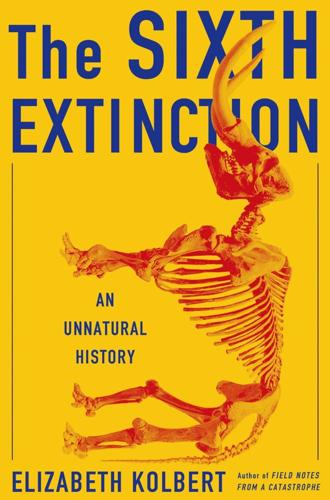
The Sixth Extinction: An Unnatural History
by
Elizabeth Kolbert
Published 11 Feb 2014
Bruner and Leo Postman, “On the Perception of Incongruity: A Paradigm,” Journal of Personality 18 (1949): 206–23. I am indebted to James Gleick for drawing my attention to this experiment: see Chaos: Making a New Science (New York: Viking, 1987), 35. “In science, as in the playing card experiment”: Thomas S. Kuhn, The Structure of Scientific Revolutions, 2nd ed. (Chicago: University of Chicago Press, 1970), 64. “God knows how many catastrophes”: Quoted in Patrick John Boylan, “William Buckland, 1784–1859: Scientific Institutions, Vertebrate Paleontology and Quaternary Geology” (Ph.D. dissertation, University of Leicester, England, 1984), 468.

Boom: Bubbles and the End of Stagnation
by
Byrne Hobart
and
Tobias Huber
Published 29 Oct 2024
Another study on the decline of pharmaceutical R&D efficiency found that the number of new drugs approved per billion US dollars spent on R&D has halved roughly every nine years since 1950, falling around 80-fold in inflation-adjusted terms. 101 The Editors, “Dr. No Money: The Broken Science Funding System,” Scientific American, May 1, 2011, https://www.scientificamerican.com/article/dr-no-money/. 102 Thomas S. Kuhn, The Structure of Scientific Revolutions (Chicago: University of Chicago Press, 1970). 103 Peter Thiel and Blake Masters, Zero to One: Notes on Startups, or How to Build the Future (New York: Crown Business, 2014). 104 Andrey Rzhetsky et al., “Choosing Experiments to Accelerate Collective Discovery,” Proceedings of the National Academy of Sciences 112, no. 47 (2015): 14569–14574.

Economics Rules: The Rights and Wrongs of the Dismal Science
by
Dani Rodrik
Published 12 Oct 2015
¶ While currency appreciation is the more immediate mechanism, the same effect can be caused by an increase in domestic wages. Crowding out requires simply that domestic wages increase in foreign currency terms, which can happen because of a rise in wages, an increase in the value of the domestic currency, or some combination of the two. # Ever since Thomas Kuhn’s The Structure of Scientific Revolutions (Chicago: University of Chicago Press, 1962), it has become commonplace to question whether even the natural sciences fit this idealized mold. Kuhn pointed out that scientists work within “paradigms” that they’re unwilling to give up even in the presence of evidence that violates them.
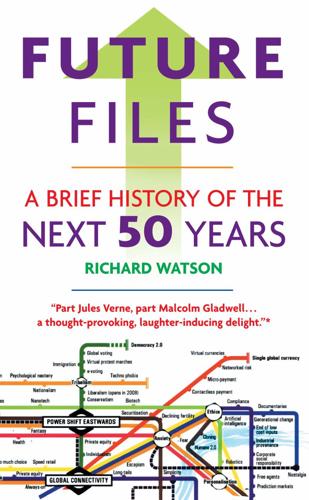
Future Files: A Brief History of the Next 50 Years
by
Richard Watson
Published 1 Jan 2008
A study by Harvard Medical School found that after the age of 40 around 400 genes become lazy, which affects learning, memory and communication skills. Another study found that workplace coordination and dexterity start to fall after the age of 25 and decline Work and Business 281 dramatically after 35. This more or less fits with the theory put forward by Thomas Kuhn in The Structure of Scientific Revolutions that radical breakthroughs tend to come from just three sources: young people, accidents and the cross-fertilization of disciplines. In other words, it’s younger people who tend to create value. This is obviously problematic from one standpoint — that workplace remuneration tends to be based on age and experience — so maybe in the future we’ll see employers putting more time and effort into keeping older minds young and also linking pay to results rather than just age.

Innovation and Its Enemies
by
Calestous Juma
Published 20 Mar 2017
Geels, “Regime Resistance against Low-Carbon Transitions: Introducing Politics and Power into the Multi-Level Perspective,” Theory, Culture and Society 31, no. 5 (2014): 21–40. 115. Similar dynamics of success are evident in the field of scientific research as illustrated in Thomas Kuhn, The Structure of Scientific Revolutions (Chicago: University of Chicago Press, 1962). Chapter 2 1. Suzanne Bush, “Coffee Cleared in Chemical Court,” BBC News, September 30, 2003. 2. Bush, “Coffee Cleared.” 3. Joseph A. Schumpeter, Business Cycles: A Theoretical, Historical and Statistical Analysis of the Capitalist Process, vol. 1 (New York: McGraw Hill, 1939), 73. 4.
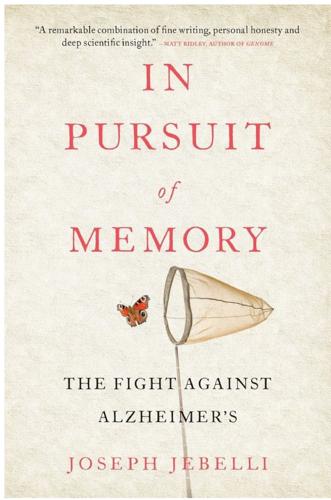
In Pursuit of Memory: The Fight Against Alzheimer's
by
Joseph Jebelli
Published 30 Oct 2017
Instead of being rooted in psychology, he made it clear that dementia may reflect deeper riddles of biology. And whatever Alzheimer’s disease was, it was a riddle that cried out almost literally for a solution. 2 Understanding an Epidemic The historian of science may be tempted to exclaim that when paradigms change, the world itself changes with them. Thomas Kuhn, The Structure of Scientific Revolutions, 1962 IN THE DECADES that followed the eponymous Bavarian’s first public description of Alzheimer’s, scientists, pathologists and psychiatrists were at loggerheads over what he had actually discovered. Alzheimer had certainly found a unique pattern of brain pathology with those ‘peculiar’ plaques and tangles scattered among the debris of dead nerve cells.

The Virtue of Nationalism
by
Yoram Hazony
Published 3 Sep 2018
On the World Trade Organization, see Rabkin, Law Without Nations?, 193–232. On the “globalization” of domestic politics under the rubric of the pursuit of universal human rights, see Rabkin, Law Without Nations?, 158–192; Fonte, Sovereignty or Submission, 201–278. PART THREE: ANTI-NATIONALISM AND HATE 1. Thomas Kuhn, The Structure of Scientific Revolutions (Chicago: University of Chicago Press, 1996 [1962]), esp. 148–151. 2. See Chapter III. 3. See Chapter II, esp. note 16 (Part One). 4. Immanuel Kant, “Perpetual Peace,” in Political Writings, ed. Hans Reiss, trans. H. B. Nisbet (Cambridge, UK: Cambridge University Press, 1970), 102–103.
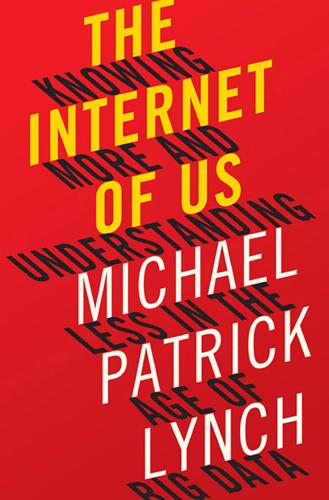
The Internet of Us: Knowing More and Understanding Less in the Age of Big Data
by
Michael P. Lynch
Published 21 Mar 2016
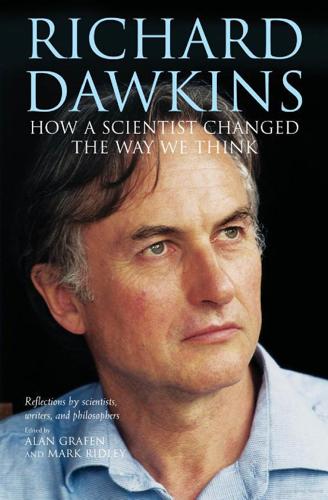
Richard Dawkins: How a Scientist Changed the Way We Think
by
Alan Grafen; Mark Ridley
Published 1 Jan 2006
Dennett, ‘The New Replicators’, in Mark Page (ed.), The Encyclopedia of Evolution (Oxford: Oxford University Press, 2002), vol. 1, E83-E92. 36 J. M. Balkin, Cultural Software: A Theory of Ideology (New Haven: Yale University Press, 1998). 37 Daniel C. Dennett, Breaking the Spell (London: Penguin, 2006). 38 A. Turing, ‘Computing Machinery and Intelligence’, Mind, 59 (1950): 433-46°. 39 Thomas Kuhn, The Structure of Scientific Revolutions (Chicago: University of Chicago Press, 1962). The invention of an algorithmic biology Seth Bullock BIOLOGY and computing might not seem the most comfortable of bedfellows. It is easy to imagine nature and technology clashing as the green-welly brigade rub up awkwardly against the back-room boffins.

Duped: Double Lives, False Identities, and the Con Man I Almost Married
by
Abby Ellin
Published 15 Jan 2019
So painful and scary is the idea of being betrayed by the person with whom you share your life that many of us would prefer to believe ourselves wrong.51 This response is known as “betrayal blindness,” and it’s the idea that we overlook clues to deception because it’s to our benefit not to see them.52 So how can the self be both duper and dupee at the same time? Because not all our beliefs are conscious. In a 1979 study by Ruben Gur and Harold Sackeim, people were matched for age and sex and asked to read the same paragraph out loud. The passage was from Thomas Kuhn’s Structure of Scientific Revolutions.53 (Kuhn was the physicist, philosopher, and historian who introduced the term “paradigm shift” to mass audiences.) The researchers recorded the participants and then sliced the recordings into segments of two, four, six, twelve, and twenty-four seconds. The participants then listened to a master tape that played back a mixture of everyone’s voices.

The Constitution of Knowledge: A Defense of Truth
by
Jonathan Rauch
Published 21 Jun 2021
You and I Are More Biased than We Are In networked rationality, we also find an answer to the problem of bias and misperception. Critics of science often argue that science must be biased because individual scientists, like all other humans, are biased. In fact, as the philosopher of science Thomas Kuhn argued in his 1962 book, The Structure of Scientific Revolutions, individual scientists sometimes are not even rational. The answer is: of course scientists are biased. But that premise does not justify the conclusion that liberal science as a whole is biased. Although members of the reality-based community may be as blind to their own errors and biases as anybody else, they are not blind to the errors and biases of those with whom they disagree.

The Zero Marginal Cost Society: The Internet of Things, the Collaborative Commons, and the Eclipse of Capitalism
by
Jeremy Rifkin
Published 31 Mar 2014
A new economic model is emerging in the twilight of the capitalist era that is better suited to organize a society in which more and more goods and services are nearly free. The term paradigm shift has been thrown around so much in recent years, in reference to virtually any kind of change, that it might be helpful to revisit the words of Thomas Kuhn, whose book The Structure of Scientific Revolutions made the word paradigm part of the general discourse. Kuhn described a paradigm as a system of beliefs and assumptions that operate together to establish an integrated and unified worldview that is so convincing and compelling that it is regarded as tantamount to reality itself.
…
Summers, “The ‘New Economy’: Background, Historical Perspective, Questions and Speculations,” Economic Policy for the Informational Economy (2001): 16. 10. Ibid., 35. 11. Ibid. 12. Ibid., 16. 13. Ibid. 14. Ibid. 15. Ibid. 16. Ibid., 16, 38. 17. Thomas S. Kuhn, The Structure of Scientific Revolutions (Chicago: University of Chicago Press, 1962). 18. Isaac Asimov, “In the Game of Energy and Thermodynamics You Can’t Even Break Even,” Smithsonian, August 1970, 9. 19. Viktor Mayer-Schönberger and Kenneth Cukier, Big Data: A Revolution That Will Transform How We Live, Work, and Think (Boston: Houghton Mifflin Harcourt, 2013) 59. 20.

The Computer Boys Take Over: Computers, Programmers, and the Politics of Technical Expertise
by
Nathan L. Ensmenger
Published 31 Jul 2010
Information and the Transformation of Molecular Biology,” Science in Context 8 (1995): 609–634; Ronald Kline, “Cybernetics, Management Science, and Technology Policy: The Emergence of ‘Information Technology’ as a Keyword, 1948–1985,” Technology and Culture 47, no. 3 (2006): 513–535. 63. Karl Steinbuch, INFORMATIK: Automatische Informationsverarbeitung (Berlin: SEG-Nachrichten, 1957). 64. Thomas S. Kuhn, The Structure of Scientific Revolutions (Chicago: University of Chicago Press, 1962), 138. 65. Donald Ervin Knuth, The Art of Computer programming, Volume 1: Fundamental Algorithms (Reading, MA: Addison-Wesley, 1968). 66. Paul Ceruzzi, “Electronics Technology and Computer Science, 1940–1975: A Coevolution,” IEEE Annals of the History of Computing 10, no. 4 (1989): 257–275. 67.
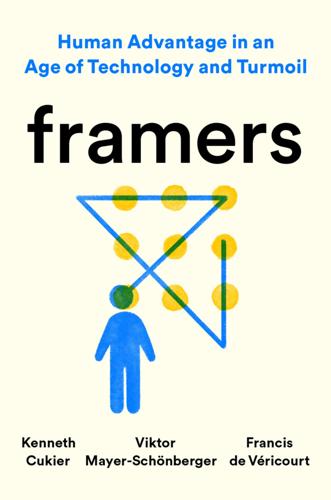
Framers: Human Advantage in an Age of Technology and Turmoil
by
Kenneth Cukier
,
Viktor Mayer-Schönberger
and
Francis de Véricourt
Published 10 May 2021
On Edison and education: Todd Oppenheimer, The Flickering Mind: Saving Education from the False Promise of Technology (New York: Random House, 2004). On Kahneman and Tversky’s “framing effect”: Amos Tversky and Daniel Kahneman, “The Framing of Decisions and the Psychology of Choice,” Science 211, no. 4481 (January 30, 1981): 453–58. On Kuhn’s “paradigm shift”: Thomas S. Kuhn, The Structure of Scientific Revolutions (Chicago: University of Chicago Press, 1962). On the origin of art perspective: Giorgio Vasari, “The Life of Filippo Brunelleschi, Sculptor and Architect,” in The Lives of the Artists, trans. Julia C. Bondanella and Peter Bondanella (Oxford: Oxford University Press, 2008), 110–46.
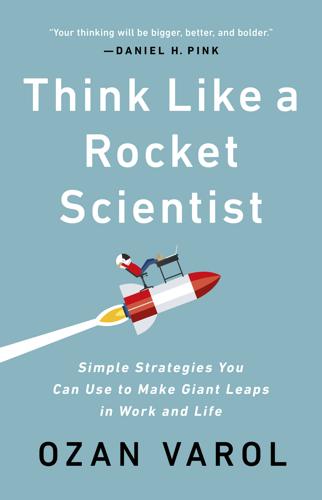
Think Like a Rocket Scientist: Simple Strategies You Can Use to Make Giant Leaps in Work and Life
by
Ozan Varol
Published 13 Apr 2020
Isaacson, Einstein: His Life and Universe. 47. T. C. Chamberlin, “The Method of Multiple Working Hypotheses,” Science, May 1965, http://arti.vub.ac.be/cursus/2005-2006/mwo/chamberlin1890science.pdf. 48. Isaac Asimov, “The Relativity of Wrong,” Skeptical Inquirer 14 (fall 1989):35–44. 49. Thomas S. Kuhn, Structure of Scientific Revolutions (Chicago: University of Chicago Press, 1962), xxvi. 50. Howard Wainer and Shaun Lysen, “That’s Funny… A Window on Data Can Be a Window on Discovery,” American Scientist, July 2009, www.americanscientist.org/article/thats-funny. 51. For the discovery of quantum mechanics, see John D.
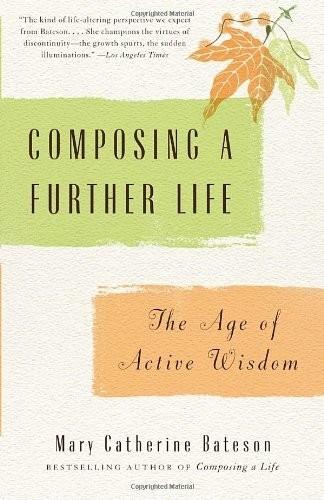
Composing a Further Life: The Age of Active Wisdom
by
Mary Catherine Bateson
Published 13 Sep 2010
Mary Catherine Bateson, Composing a Life (New York: Atlantic Monthly Press, 1989). II. Small and Beautiful 1. Erik H. Erikson, Young Man Luther (New York: W. W. Norton, 1958), pp. 100-104. 2. Nevil Shute, Trustee from the Toolroom (New York: William Morrow, 1960). III. Liberation Time 1. Thomas Kuhn, The Structure of Scientific Revolutions (Chicago: University of Chicago Press, 1962). 2. Ibid. IV. From Strength to Strength 1. Arnold Gesell, An Atlas of Infant Behavior (New Haven: Yale University Press, 1934). 2. Sigmund Freud, “Three Contributions to the Theory of Sex,” in The Basic Writings of Sigmund Freud, ed.

Origin Story: A Big History of Everything
by
David Christian
Published 21 May 2018
(Princeton, NJ: Princeton University Press, 1968), 261. 6. Stephen Hawking, A Brief History of Time: From the Big Bang to Black Holes (London: Bantam, 1988), 151. 7. My thanks to Elise Bohan for this quote from Terry Pratchett, Lords and Ladies (London: Victor Gollancz, 1992). 8. On paradigms, the classic text is Thomas Kuhn, The Structure of Scientific Revolutions, 2nd ed. (Chicago: University of Chicago Press, 1970). 9. Peter Atkins, Chemistry: A Very Short Introduction (Oxford: Oxford University Press, 2015), loc. 722, Kindle. 10. Lawrence Krauss, A Universe from Nothing: Why There Is Something Rather than Nothing (New York: Simon and Schuster, 2012). 11.

The Wine-Dark Sea Within: A Turbulent History of Blood
by
Dhun Sethna
Published 6 Jun 2022
The Greatest Benefit to Mankind: A Medical History of Humanity. New York: W. W. Norton, 2003. Sigerist, Henry E. A History of Medicine, Vols. 1–2. Oxford: Oxford University Press, 1951. Willius, Fredrick, and Thomas Dry. A History of the Heart and the Circulation. Philadelphia: W. B. Saunders, 1948. Notes INTRODUCTION 1. Thomas Kuhn, The Structure of Scientific Revolutions (Chicago: University of Chicago Press, 1962). 2. Ludwik Fleck, Genesis and Development of a Scientific Fact (Chicago: University of Chicago Press, 1979). 1. THE ORIENTAL HERITAGE 1. Charles Singer, A Short History of Anatomy and Physiology from the Greeks to Harvey (1925; repr., New York: Dover Publications, 1957), figs. 1 and 2. 2.
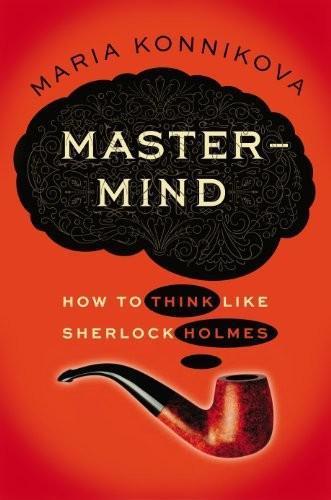
Mastermind: How to Think Like Sherlock Holmes
by
Maria Konnikova
Published 3 Jan 2013
While the latter two form a compendium of information on Conan Doyle’s life, the former is the single best source on the background for and various interpretations of the Holmes canon. For a taste of early psychology, I recommend William James’s classic text, The Principles of Psychology. For a discussion of the scientific method and its history, Thomas Kuhn’s The Structure of Scientific Revolutions. Much of the discussion of motivation, learning, and expertise draws on the research of Angela Duckworth, Ellen Winner (author of Gifted Children: Myths and Realities), and K. Anders Ericsson (author of The Road to Excellence). The chapter also owes a debt to the work of Daniel Gilbert.
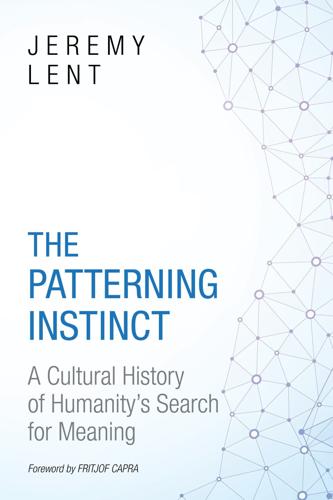
The Patterning Instinct: A Cultural History of Humanity's Search for Meaning
by
Jeremy Lent
Published 22 May 2017
In 2013, readers of a respected British magazine, Prospect, named outspoken reductionist Richard Dawkins as the world's top thinker. Why has mainstream thinking so far failed to fully embrace this new understanding of life?43 One answer lurks in a famous monograph published in 1962 by philosopher of science Thomas Kuhn called The Structure of Scientific Revolutions. “In science,” Kuhn observes, “novelty emerges only with difficulty, manifested by resistance.” When a worldview is established, and works reasonably well, people get used to thinking according to the cognitive structures it encourages. As we've seen throughout this book, the human patterning instinct has evolved to focus attention on what fits within its cultural frame and ignore what doesn't.
…
Lewontin, “Dream of the Human Genome”; Depew and Weber, Darwinism Evolving, 477–78; Woese, “New Biology for a New Century”; Goodwin, How the Leopard Changed Its Spots, xvi–xvii. 42. Kauffman, At Home in the Universe, 185–86. See “The Modern Relevance of Li” in chapter 14. 43. Ott, “Edward N. Lorenz”; John Dugdale, “Richard Dawkins Named World's Top Thinker in Poll,” Guardian, April 25, 2013. 44. Thomas S. Kuhn, The Structure of Scientific Revolutions (Chicago: University of Chicago Press, 1996), 64. 45. Ibid., 85–86, 151–52. Chapter 20. Consuming the Earth in the Modern Era 1. Johann Wolfgang von Goethe, “The Sorcerer's Apprentice,” trans. Brigitte Dubiel (1797). I am indebted to Steve Hagen for pointing out this work as a parable for the power of technology.
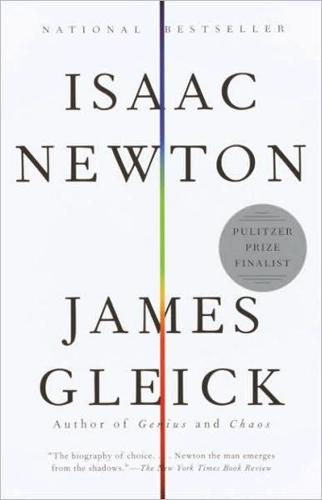
Isaac Newton
by
James Gleick
Published 1 Jan 2003

Sickening: How Big Pharma Broke American Health Care and How We Can Repair It
by
John Abramson
Published 15 Dec 2022
Metro, “OIG Moving Ahead on Changes to Anti-Kickback Safe Harbor Protection for Drug Rebates to Plans, PBMs,” Office of Inspector General Regulations, July 20, 2018, https://www.healthindustrywashingtonwatch.com/2018/07/articles/regulatory-developments/office-of-inspector-general-regulations/oig-moving-ahead-on-changes-to-anti-kickback-safe-harbor-protection-for-drug-rebates-to-plans-pbms/. living in a different world: Thomas S. Kuhn, The Structure of Scientific Revolution (Chicago: University of Chicago Press, 1962), 192. “a more systematic approach”: Institute of Medicine, Knowing What Works in Health Care: A Roadmap for the Nation (Washington, DC: National Academies Press, 2008), https://www.nap.edu/catalog/12038/knowing-what-works-in-health-care-a-roadmap-for-the.
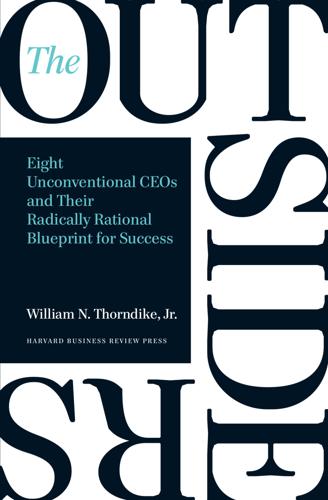
The Outsiders: Eight Unconventional CEOs and Their Radically Rational Blueprint for Success
by
William Thorndike
Published 14 Sep 2012

The Nature of Technology
by
W. Brian Arthur
Published 6 Aug 2009
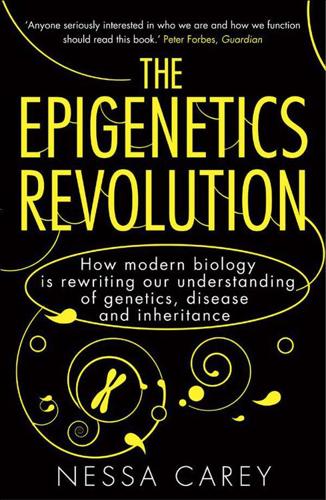
Epigenetics Revolution: How Modern Biology Is Rewriting Our Understanding of Genetics, Disease and Inheritance
by
Nessa Carey
Published 31 Aug 2011
And if you’re feeling particularly mean, you can tell them that Tom is infertile. That should shut them up. Chapter 10 The Message is Not the Medium Science commits suicide when it adopts a creed. Thomas Henry Huxley One of the most influential books on the philosophy of science is Thomas Kuhn’s The Structure of Scientific Revolutions, published in 1962. One of the claims in Kuhn’s book is that science does not proceed in an orderly, linear and polite fashion, with all new findings viewed in a completely unbiased way. Instead, there is a prevailing theory which dominates a field. When new conflicting data are generated, the theory doesn’t immediately topple.

The Biggest Prison on Earth: A History of the Occupied Territories
by
Ilan Pappé
Published 21 Jun 2017
But in other respects the mode of rule in the Jordanian period fitted the Israeli conceptions of control well. It was as comprehensive as the Israelis hoped it would be; it even included a list of the books censored in the West Bank, especially for children. The Jordanian list included The Diary of Anne Frank, while the Israeli list named Thomas Kuhn’s The Structure of Scientific Revolutions (presumably because it contained in the title the word ‘revolution’).7 The Shacham Plan also suggested the names of people who should be appointed to senior posts in the future occupation. Some of them would indeed be there in 1967, men such as Chaim Herzog and the plan’s mastermind, Colonel Mishael Shacham himself.

Evil Genes: Why Rome Fell, Hitler Rose, Enron Failed, and My Sister Stole My Mother's Boyfriend
by
Barbara Oakley Phd
Published 20 Oct 2008
Sonne, “On Tyrants as Abortion Survivors,” Journal of Prenatal & Perinatal Psychology & Health 19, no. 2 (2004): 149–67. 9. As of February 21, 2007. 10. Glad, “Why Tyrants Go Too Far.” 11. Tony Becher and Paul Trowler, Academic Tribes and Territories, 2nd ed. (Philadelphia, PA: Open University Press, 2001); Thomas Kuhn, The Structure of Scientific Revolutions, 3rd ed. (Chicago: University of Chicago Press, 1996). 12. Judith Rich Harris, The Nurture Assumption (New York: Free Press, 1998); Steven Pinker, The Blank Slate: The Modern Denial of Human Nature (New York: Viking, 2002). CHAPTER 1: IN SEARCH OF MACHIAVELLI 1. Albert Szent-Gyorgyi, in L.

Civilization: The West and the Rest
by
Niall Ferguson
Published 28 Feb 2011

Flow: The Psychology of Optimal Experience
by
Mihaly Csikszentmihalyi
Published 1 Jul 2008
Every home a museum. Csikszentmihalyi & Rochberg-Halton (1981) studied over 300 members of three-generational families around Chicago, who were asked in their homes to show interviewers their favorite objects, and to explain the reasons for cherishing them. The four quotations from Thomas Kuhn’s The Structure of Scientific Revolutions (1962) are from pages 24, 38, 38, and 36, respectively. One of the most exciting promises of flow theory is that it may help explain why certain ideas, practices, and products are adopted, while others are ignored or forgotten—since at this point the histories of ideas, institutions, and cultures work almost exclusively within a paradigm informed by economic determinism.
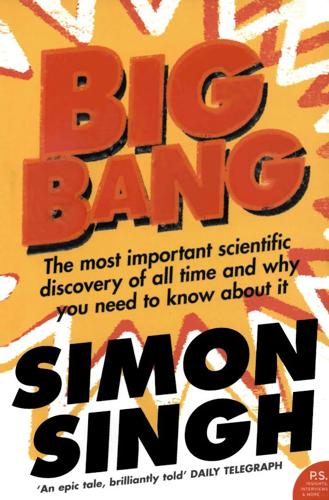
Big Bang
by
Simon Singh
Published 1 Jan 2004
Narlikar, A Different Approach to Cosmology (CUP, 2000) The authors, who remain unconvinced by the Big Bang model, put forward their own arguments and challenge the interpretations of various observations. Epilogue Karl Popper, The Logic of Scientific Discovery (Routledge, 2002) First published in 1959, Popper presents an academic and revolutionary view of the philosophy of science. Thomas S. Kuhn, The Structure of Scientific Revolutions (University of Chicago Press, 1996) First published in 1962, this is Kuhn’s alternative view of the nature of scientific progress. Steve Fuller, Kuhn vs Popper (Icon, 2003) A re-examination of the Kuhn versus Popper debate on the philosophy of science, which is more accessible than their original publications cited above.
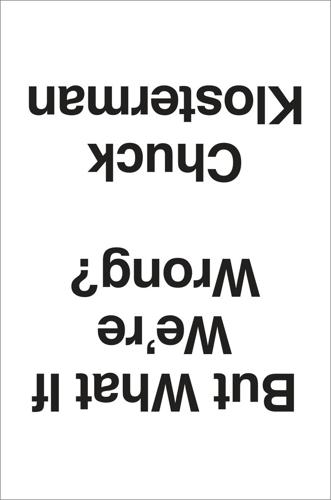
But What if We're Wrong? Thinking About the Present as if It Were the Past
by
Chuck Klosterman
Published 6 Jun 2016
But his central point is my obsession: the possibility that we are unable to isolate or imagine something fundamental about the construction of reality, and that the eventual realization of whatever that fundamental thing is will necessitate a rewrite of everything else. Here again, I’m not the first person to fantasize about this possibility. It’s the controversial premise of Thomas Kuhn’s 1962 masterwork The Structure of Scientific Revolutions. Kuhn’s take was that science does not advance through minor steps, but through major ones—basically, that everyone believes all the same things for long stretches of time, only to have the entire collective worldview altered by a paradigm shift36 transforming the entire system.
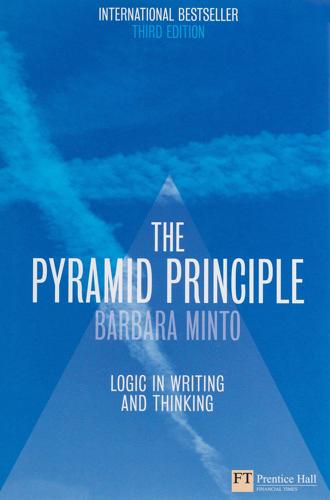
The Pyramid Principle: Logic in Writing and Thinking
by
Barbara Minto
Published 2 Jan 2010

Enlightenment Now: The Case for Reason, Science, Humanism, and Progress
by
Steven Pinker
Published 13 Feb 2018
Intellectual magazines that are ostensibly dedicated to ideas confine themselves to politics and the arts, with scant attention to new ideas emerging from science, with the exception of politicized issues like climate change (and regular attacks on scientism).20 Still worse is the treatment of science in the liberal arts curricula of many universities. Students can graduate with a trifling exposure to science, and what they do learn is often designed to poison them against it. The most commonly assigned book on science in modern universities (aside from a popular biology textbook) is Thomas Kuhn’s The Structure of Scientific Revolutions.21 That 1962 classic is commonly interpreted as showing that science does not converge on the truth but merely busies itself with solving puzzles before flipping to some new paradigm which renders its previous theories obsolete, indeed, unintelligible.22 Though Kuhn himself later disavowed this nihilist interpretation, it has become the conventional wisdom within the Second Culture.
…
See Nordic countries Schank, Roger, 477n20 Scheidel, Walter, 106–7 Schelling, Friedrich, 30 Schelling, Thomas, 480nn105,112 Schell, Jonathan, 309–310, 456n1 Schmitt, Carl, 447 Schneier, Bruce, 303, 304 Schopenhauer, Arthur, 39–40, 165 Schrag, Daniel, 151 Schumer, Amy, 434 Schwartz, Richard, 274 science application to wealth creation, 82–3, 94–5 beauty and, 34, 260, 386, 407–8, 433–4 climate change, consensus on, 137–8, 464n45 collaboration in, 64, 409 cosmopolitan virtues of, 409 definition of, 9, 391–3 depth of achievements of, 385–7 doubt as first principle of, 390 and errors and prejudices, discrediting own, 391 heroes of, 63–4 ideals of, 27, 387–8, 390, 392–3, 409 methods of, 10, 390, 392 naïveté of scientists on policy, 390–91 national boundaries transcended by, 387–8, 409 nuclear war activism by scientists, 308–310 nuclear weapons as indictment of, 308 and political correctness, accusations of, 138 political ideology in scientists, 138, 356–8, 372 and “scientific method,” as term, 392 science, disdain for, 33–4, 387, 389–90, 395, 408–9 and bioethics, 402 as bipartisan, 388–9 cultural sophistication and, 17 faitheism and, 430 history of science and, 395–6 and Thomas Kuhn’s The Structure of Scientific Revolutions, 395, 486n21 left-wing repression, 373, 388 medical progress and, 63 right-wing politicians and, 387–8 “science studies” and, 396 Second Culture paranoia about, 389–90, 409 university general education, 400–401 See also intellectuals; scientism —EVILS BLAMED ON SCIENCE, 388–9, 397, 400 eugenics, 388, 399–400 Holocaust, 397 nuclear weapons, 308–310 racism and imperialism, 34, 388, 397–8, 399, 486n32 Social Darwinism, 388, 398–9, 486nn36–37 Tuskegee syphilis study, 401 science of man, 10 Scientific Revolution, 8, 9–10, 24, 326 scientism, 34, 388, 389, 390, 392, 395.

The end of history and the last man
by
Francis Fukuyama
Published 28 Feb 2006
There is, moreover, a hierarchy among paradigms that is established by nature rather than man: the theory of relativity could not have been discovered before having discovered the Newtonian laws of motion. It is this hierarchy among paradigms that ensures a coherence and unidirectionality to the advancement of scientific knowledge. See Thomas S. Kuhn, The Structure of Scientific Revolutions, second edition (Chicago: University of Chicago Press, 1970), particularly pp. 95-110, 139-143, and 170-173. For a review of criticisms of Kuhn, see Terence Ball, “From Paradigms to Research Programs: Toward a Post-Kuhnian Political Science,” American Journal of Political Science 20, no. 1 (February 1976): 151-177. 3 There are instances of less technologically advanced powers “defeating” more advanced ones, like Vietnam and the United States or Afghanistan and the Soviet Union, but the reasons for these defeats lay in the very different political stakes of the two sides.
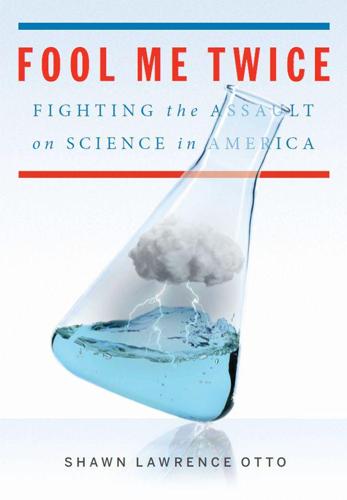
Fool Me Twice: Fighting the Assault on Science in America
by
Shawn Lawrence Otto
Published 10 Oct 2011
Science came to be seen as the province of a hawkish, probusiness political-right power structure—polluting, uncaring, greedy, mechanistic, sexist, racist, imperialistic, oppressive, and not to be trusted. KUHNIANISM In 1962, this broad ambivalence toward science crystallized with the publication of American philosopher Thomas Kuhn’s The Structure of Scientific Revolutions. Stunningly, it became one of the most cited academic books of the twentieth century. It sold about a million copies, a figure unheard of for a philosophical text, and gave clarity to Americans’ increasingly ambivalent attitudes toward science and the nature of reality. Science was not the gradual and painstaking accumulation of knowledge, Kuhn said, but rather a sociological and thus political phenomenon that happens in sudden paradigm shifts.

The Marginal Revolutionaries: How Austrian Economists Fought the War of Ideas
by
Janek Wasserman
Published 23 Sep 2019

Never Let a Serious Crisis Go to Waste: How Neoliberalism Survived the Financial Meltdown
by
Philip Mirowski
Published 24 Jun 2013
Smith, “What I Learned in Grad School.” 20 This dynamic is described from various vantage points in Weintraub, The Future of the History of Economics; Lee, A History of Heterodox Economics; and Haring, “Economics Is Losing Its Memory.” 21 Available for viewing at www.aeaweb.org/webcasts/assa2010.php. 22 For a video admission by Alan Blinder, see www.cengagesites.com/academic/?site=5322&secID=5312. And for that of John Taylor: www.cengagesites.com/academic/?site=5724&SecID=7344. 23 The texts were “The Methodology of Positive Economics” in Friedman, Essays in Positive Economics, and Thomas Kuhn, The Structure of Scientific Revolutions. See, for instance, http://economistsview.typepad.com/economistsview/ 2009/08/why-this-new-crisis-needs-a-new-paradigm-of-economic-thought.html#more;or www.voxeu.org/index.php?q=node/3210; or www.rieti.go.jp/en/rieti_report/108.html. It was instructive how economists instinctively and unself-consciously turned to the writings of members of the Mont Pèlerin Society such as Friedman and Popper when they were forced to access “philosophy.”

Emergence
by
Steven Johnson

The Blockchain Alternative: Rethinking Macroeconomic Policy and Economic Theory
by
Kariappa Bheemaiah
Published 26 Feb 2017
Footnotes 1The Royal Society is a Fellowship of many of the world’s most eminent scientists and is the oldest scientific academy in continuous existence. 2See ‘Technological novelty profile and invention’s future impact’, Kim et al., (2016), EPJ Data Science. 3The term ‘combinatorial evolution’, was coined by the scientific theorist W. Brian Arthur, who is also one of the founders of complexity economics. In a streak that is similar to Thomas Kuhn’s ‘The Structure of Scientific Revolutions’, Arthur’s book, ‘The Nature of Technology: What It Is and How It Evolves’, explains that technologies are based on interactions and composed into modular systems of components that can grow. Being modular, they combine with each other and when a technology reaches a critical mass of components and interfaces, it evolves to enter new domains, and changes based on the new natural phenomena it interacts with.
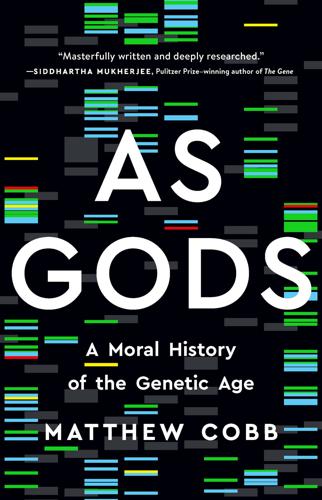
As Gods: A Moral History of the Genetic Age
by
Matthew Cobb
Published 15 Nov 2022
Both the bomb test moratorium and the test ban treaty required the public to trust their political and military leaders at a time when confidence in authority – including in science – was becoming increasingly fragile. Intellectuals began to question science’s claims to authoritative knowledge, in particular following the publication of Thomas Kuhn’s The Structure of Scientific Revolutions in 1962. Kuhn explored how scientific disputes were also struggles for power within science; to his dismay, some readers concluded that truth was a purely relative thing and that ultimately science was just another story. More concretely, there were growing worries about the inadvertent effects of chemicals, as highlighted by the thalidomide scandal, when a drug prescribed to relieve morning sickness caused tens of thousands of children to be born with deformities.

How Emotions Are Made: The New Science of the Mind and Brain
by
Lisa Feldman Barrett
Published 6 Mar 2017
I call this band of scientists the Lost Chorus because their work, published in prestigious journals, has been largely overlooked, ignored, or misunderstood since the supposed dark ages ended.37 Why did the Lost Chorus flourish for half a century and then vanish? My best guess is that these scientists did not offer a fully formed, alternative theory of emotion to compete with the compelling classical view. They presented solid counterevidence to be sure, but criticism alone was not enough to remain relevant. As philosopher Thomas Kuhn wrote about the structure of scientific revolutions: “To reject one paradigm without simultaneously substituting another is to reject science itself.” So when the classical view reasserted itself in the 1960s, half a century of anti-essentialist research was swept into history’s dustbin. And we are all the poorer for it, considering how much time and money are being wasted today in pursuit of illusory emotion essences.

The Myth of Capitalism: Monopolies and the Death of Competition
by
Jonathan Tepper
Published 20 Nov 2018
The damage has already been done. Max Planck once said, “Science progresses one funeral at a time.” Any reform of antitrust laws will likely have to come when those influenced by Bork die away. Law does not proceed in a straight line toward greater fairness and justice. In 1962 Thomas Kuhn wrote The Structure of Scientific Revolutions. It has become one of the most cited books of all time. He rejected the idea that scientific progress was “the addition of new truths to the stock of old truths” and the correction of past errors. Kuhn saw science as shifting radically from one paradigm to another, going from normal to revolutionary phases.

The Age of Wonder
by
Richard Holmes
Published 15 Jan 2008
He announced, ‘An undevout astronomer is mad,’ though he had some doubts about the size and complication of the cosmos as revealed by Newton’s mathematics: ‘Perhaps a seraph’s computation fails!’ (Book IX, lines 1, 226-35). A later edition of the poem was superbly illustrated with William Blake’s watercolour engravings, a consolation for those terrified by the new cosmology. Bibliography The Bigger Picture (In chronological order of publication) Thomas Kuhn, The Structure of Scientific Revolutions, Chicago UP, 1962-70 Albert Bettex, The Discovery of Nature (with 482 illustrations), Thames & Hudson, 1965 James D. Watson, The Double Helix: A Personal Account of the Discovery of the Structure of DNA, 1968/2001 Arthur Koestler, The Act of Creation, Danube edition, 1969 Jacob Bronowski, The Ascent of Man, 1973 Adrian Desmond and James Moore, Darwin, Penguin, 1992 Lewis Wolpert, The Unnatural Nature of Science, Faber, 1992 James Gleick, Richard Feynman and Modern Physics, Pantheon Books, 1992 Michael J.

Currency Wars: The Making of the Next Gobal Crisis
by
James Rickards
Published 10 Nov 2011
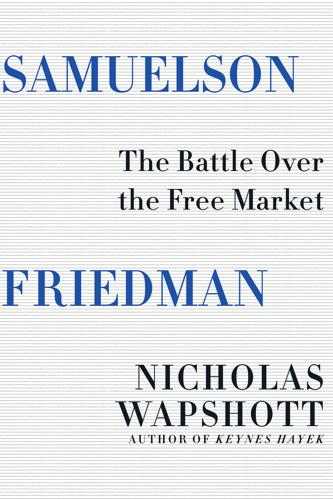
Samuelson Friedman: The Battle Over the Free Market
by
Nicholas Wapshott
Published 2 Aug 2021
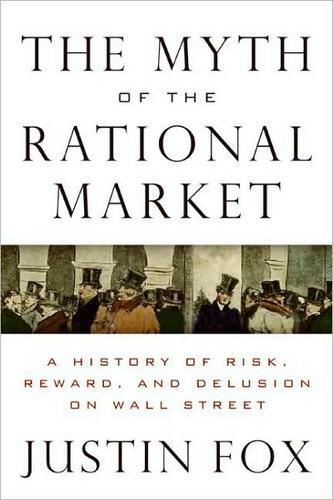
The Myth of the Rational Market: A History of Risk, Reward, and Delusion on Wall Street
by
Justin Fox
Published 29 May 2009
However absurd and reality denying that may seem from the outside, it’s how science works. “Normal science, the activity in which most scientists inevitably spend almost all their time, is predicated on the assumption that the scientific community knows what the world is like,” wrote Thomas Kuhn in The Structure of Scientific Revolutions. “Much of the success of the enterprise derives from the community’s willingness to defend that assumption, if necessary at considerable cost.” Attacks from outside are thus likely to fail. It is only when hard-to-explain anomalies start cropping up within the paradigm of a science that change is possible.

The Deep Learning Revolution (The MIT Press)
by
Terrence J. Sejnowski
Published 27 Sep 2018
Barbara Oakley, Ariel Knafo, Guruprasad Madhavan, and David Sloan Wilson (eds.), Pathological Altruism (Oxford: Oxford University Press, 2011). 30. https://futureoflife.org/open-letter-autonomous-weapons/. 302 Notes 31. http://www.cnn.com/2017/09/01/world/putin-artificial-intelligence-will-rule -world/index.html. 32. Andrew Burtjan, “Leave A.I. Alone,” New York Times, January 4, 2018. https:// www.nytimes.com/2018/01/04/opinion/leave-artificial-intelligence.html. Chapter 9 1. Thomas S. Kuhn, The Structure of Scientific Revolutions, 2nd ed. (Chicago: University of Chicago Press, 1970), 23 2. M. Riesenhuber and T. Poggio, “Hierarchical Models of Object Recognition In Cortex.” Nat Neurosci. 2: 1019-1025, 1999; T. Serre, A. Oliva, and T. Poggio, “A Feedforward Architecture Accounts for Rapid Categorization.”

The Road to Ruin: The Global Elites' Secret Plan for the Next Financial Crisis
by
James Rickards
Published 15 Nov 2016

Map of a Nation: A Biography of the Ordnance Survey
by
Rachel Hewitt
Published 6 Jul 2011
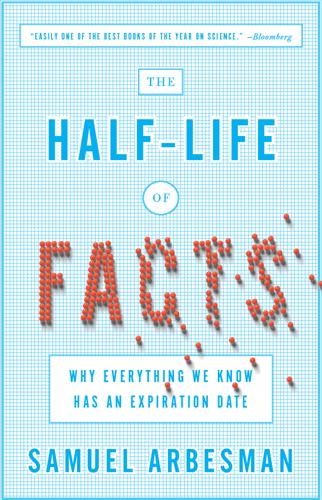
The Half-Life of Facts: Why Everything We Know Has an Expiration Date
by
Samuel Arbesman
Published 31 Aug 2012
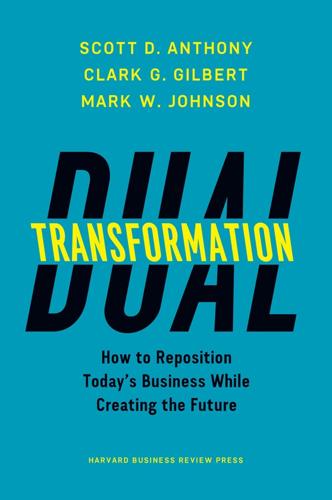
Dual Transformation: How to Reposition Today's Business While Creating the Future
by
Scott D. Anthony
and
Mark W. Johnson
Published 27 Mar 2017
One of Gilbert’s mantras was, “A digital buyer needs a digital seller.” More generally, our advice is that transformation B should involve a careful blend of people we dub “aliens” (who will push you in a new direction) and “diplomats” (who will help negotiate bilateral relationships). First, the aliens. In 1962, Thomas Kuhn’s classic The Structure of Scientific Revolutions highlighted what Kuhn dubbed paradigm shifts, which always came from outside the established orthodoxy. If you don’t bring in aliens, it is unlikely that you’ll be able to push the innovation frontier. However, the diplomats—who can speak core and alien and can arbitrate differences between the two—also play a critical role.

What's Wrong With Economics: A Primer for the Perplexed
by
Robert Skidelsky
Published 3 Mar 2020
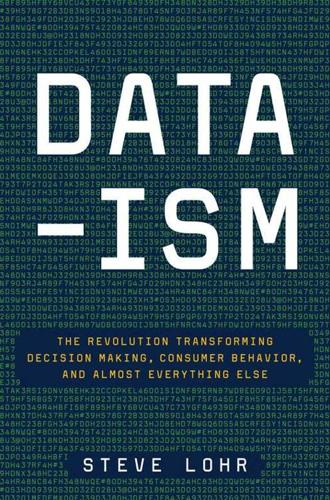
Data-Ism: The Revolution Transforming Decision Making, Consumer Behavior, and Almost Everything Else
by
Steve Lohr
Published 10 Mar 2015

Democracy Incorporated
by
Sheldon S. Wolin
Published 7 Apr 2008
We need only recall that “democracy” was not in favor among many of our Founding Fathers; that the original Constitution explicitly accepted slavery and did not include a bill of rights. 18. Cited in Fareed Zakaria, The Future of Freedom (New York: Norton, 2003), 210–11. 19. The classic statement of this view is Max Weber’s “Science as a Vocation,” in From Max Weber, 129–56. 20. See Thomas S. Kuhn, The Structure of Scientific Revolutions (Chicago: University of Chicago Press, 1962), chap. 2; J. Bronowski, Science and Human Values (New York: Harper, 1956), especially 65 ff. 21. See Sheldon Krimsky, Science in the Private Interest (San Francisco: Rowman & Littlefield, 2003). 22. In the nineteenth century there were several proposals for substituting science for religion as the basis of society, the most notable being that of Auguste Comte. 23.

Genius: The Life and Science of Richard Feynman
by
James Gleick
Published 1 Jan 1992
Clearly most of their work, most of science, was ordinary—as Freeman Dyson put it, a business of “honest craftsmen,” “solid work,” “collaborative efforts where to be reliable is more important than to be original.” In modern times it became almost impossible to talk about the processes of scientific change without echoing Thomas S. Kuhn, whose Structure of Scientific Revolutions so thoroughly changed the discourse of historians of science. Kuhn distinguished between normal science—problem solving, the fleshing out of existing frameworks, the unsurprising craft that occupies virtually all working researchers—and revolutions, the vertiginous intellectual upheavals through which knowledge lurches genuinely forward.
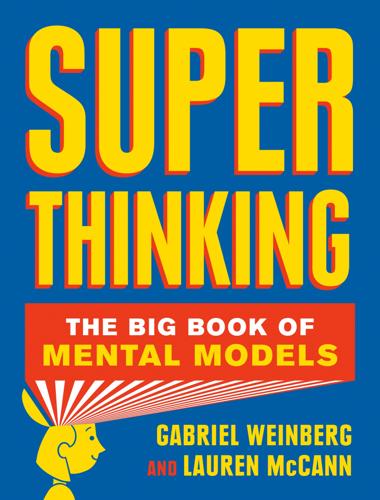
Super Thinking: The Big Book of Mental Models
by
Gabriel Weinberg
and
Lauren McCann
Published 17 Jun 2019
Even to mathematically inclined parents, this alternative way of doing arithmetic can feel foreign after so many years of thinking about it another way. Singapore Math: Addition Singapore math teaches addition using “number bonds” that break apart numbers so that students can add in groups of ten. In science, this phenomenon is documented in Thomas Kuhn’s book The Structure of Scientific Revolutions, which popularized the paradigm shift model, describing how accepted scientific theories change over time. Instead of a gradual, evolving progression, Kuhn describes a bumpy, messy process in which initial problems with a scientific theory are either ignored or rationalized away.
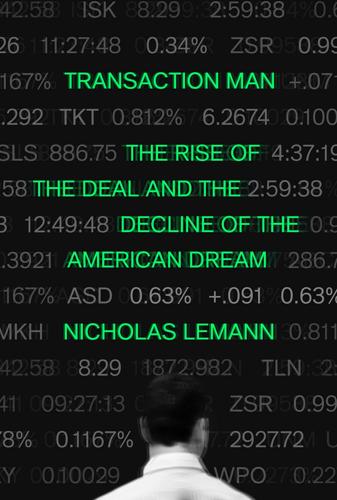
Transaction Man: The Rise of the Deal and the Decline of the American Dream
by
Nicholas Lemann
Published 9 Sep 2019
Fama developed, again through complicated statistical means, what he called the “efficient market hypothesis,” which holds that well-functioning financial markets will set the price of a stock accurately, and therefore analysts who try to learn about individual companies in detail in order to decide whether their stocks are overpriced or underpriced are essentially wasting their time. All these people—Hayek, Friedman, Markowitz, Sharpe, Modigliani, Miller, and Fama—wound up as Nobel laureates in economics. Back then, they were complete outsiders to the actual world of finance. The year that Mike Jensen came to Chicago, Thomas Kuhn’s book The Structure of Scientific Revolutions, which introduced the idea of paradigm shifts, was published. Jensen wasn’t widely read outside of economics, but Kuhn’s book was a touchstone for him, something he quoted regularly for decades because he felt he had landed in the middle of a paradigm shift. Everything that everyone had always believed about this particular universe was wrong, and now, a small group of outsiders, widely considered eccentric or even crazy by other economists, let alone by people who worked on Wall Street, was demolishing the existing edifice of ideas and replacing it with a radically different one.

Strategy: A History
by
Lawrence Freedman
Published 31 Oct 2013
Sal Restivo, “The Myth of the Kuhnian Revolution,” in Randall Collins, ed., Sociological Theory (San Francisco: Jossey-Bass, 1983), 293–305. 12. Aristides Baltas, Kostas Gavroglu, and Vassiliki Kindi, “A Discussion with Thomas S. Kuhn,” in James Conant and John Haugeland, eds., The Road Since Structure (Chicago: University of Chicago Press, 2000), 308. 13. Thomas Kuhn, The Structure of Scientific Revolutions, 2nd edn. (Chicago: University of Chicago Press, 1970), 5, 16–17. For an accessible intellectual biography see Alexander Bird, “Thomas S. Kuhn (18 July 1922–17 June 1996),” Social Studies of Science 27, no. 3 (1997): 483–502. See also Alexander Bird, Thomas Kuhn (Chesham, UK: Acumen and Princeton, NJ: Princeton University Press, 2000). 14.
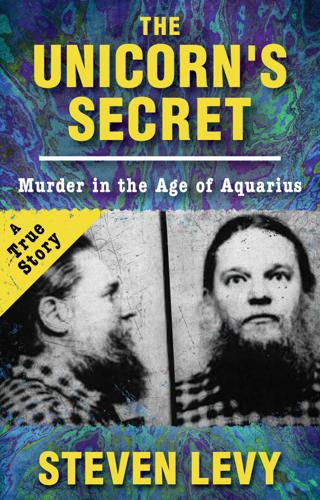
The Unicorn's Secret
by
Steven Levy
Published 6 Oct 2016
“We are closer than ever and a deep understanding has developed between the two of us,” Ira wrote. “He needs the companionship, understanding, and constant stimulation (he has told me this a number of times quite recently) that I provide.” Among the books that fired Ira’s imagination in this period were Alan Watts’s Psychotherapy East and West and Thomas Kuhn’s The Structure of Scientific Revolutions. The latter, introducing the concept of paradigm shifts—those earth-shattering changes in the way we view the world, generated by new discoveries—particularly entranced Ira. He believed that when the next paradigm shift came, he would be among the few who perceived it right away, squaring off against the old guard defending obsolete truth.
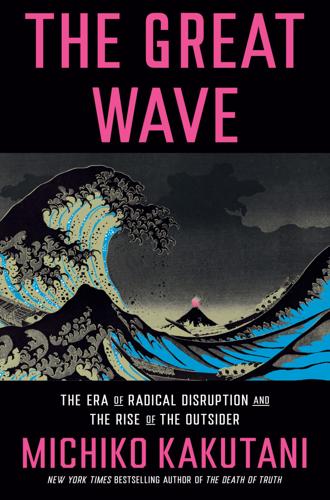
The Great Wave: The Era of Radical Disruption and the Rise of the Outsider
by
Michiko Kakutani
Published 20 Feb 2024
Europe even began a serious reevaluation of its long-term strategic goals, with countries vowing to end their dependence on Russian gas, oil, and coal and to work toward being energy self-sufficient—and greener, too. * * * — Eras on the cusp of consequential change tend to exhibit the sorts of dissonances that Thomas S. Kuhn, in his groundbreaking book, The Structure of Scientific Revolutions (1962), identified as signs of the beginning stages of a paradigm shift. During such periods, old frameworks can no longer plausibly explain or accommodate new developments, and when those “anomalies” persist or multiply, a sense of crisis ensues, leading, eventually, to a revolution of sorts—the development of a new set of coordinates for mapping the world.

The End of Traffic and the Future of Transport: Second Edition
by
David Levinson
and
Kevin Krizek
Published 17 Aug 2015
In some debates in some cities, initiatives might center less around reducing car use and more around enhancing other transport options.8 Either way, less has changed than one would expect given the revolution in information technologies over the same period. Transport discussions now make new assumptions. Borrowing from Thomas Kuhn's popular 1962 book The Structure of Scientific Revolutions, discussions ring of a "paradigm shift." Transport practitioners are encountering anomalies for which the universally accepted paradigms now have difficulty explaining.9 In the second decade of the new millennium, transport is becoming interesting (again?). Such resurgence is precisely why the two of us wrote this book.

The Clockwork Universe: Saac Newto, Royal Society, and the Birth of the Modern WorldI
by
Edward Dolnick
Published 8 Feb 2011
, p. 50. 299 “By the help of the new Analysis”: Westfall, Never at Rest, p. 424. 299 “There is no letter”: Cohen, “Introduction,” p. 123. 300 “As we read the Principia”: Chandrasekhar, “Shakespeare, Newton, and Beethoven.” CHAPTER 51. JUST CRAZY ENOUGH 301 Molière long ago made fun: Thomas Kuhn famously cited Molière in The Structure of Scientific Revolutions, p. 104. 302 “We are all agreed that your theory is crazy”: Bohr made the remark to Wolfgang Pauli and added, “My own feeling is that it is not crazy enough.” Dael Wolfle, ed., Symposium on Basic Research (Washington, DC: American Association for the Advancement of Science, 1959), p. 66. 302fn In time, this bewilderment: J.

Technological Revolutions and Financial Capital: The Dynamics of Bubbles and Golden Ages
by
Carlota Pérez
Published 1 Jan 2002
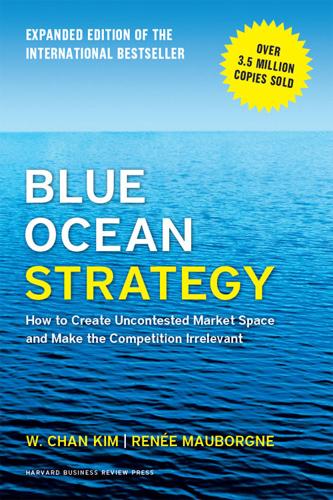
Blue Ocean Strategy, Expanded Edition: How to Create Uncontested Market Space and Make the Competition Irrelevant
by
W. Chan Kim
and
Renée A. Mauborgne
Published 20 Jan 2014
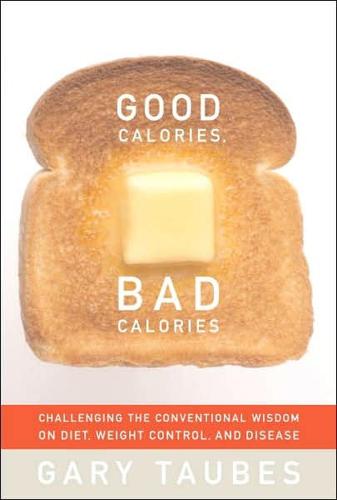
Good Calories, Bad Calories: Challenging the Conventional Wisdom on Diet, Weight Control, and Disease
by
Gary Taubes
Published 25 Sep 2007
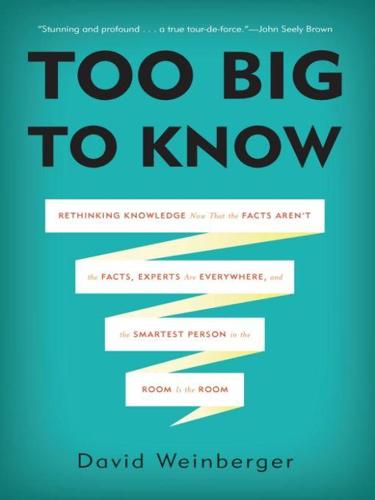
Too Big to Know: Rethinking Knowledge Now That the Facts Aren't the Facts, Experts Are Everywhere, and the Smartest Person in the Room Is the Room
by
David Weinberger
Published 14 Jul 2011
You can take the story of science over the past couple of generations as being about loosening the idea that science has a firm, unambiguous grip on the truth: • Karl Popper in 1934 gave us a way to cleanly separate science from pseudo-science by telling us that a truly scientific statement is falsifiable—that is, there is a way to prove it false.47 “Chewing gum quickly dissolves in human saliva” can be shown to be false, and thus is a scientific statement. “Chewing gum likes to be chewed” cannot be shown to be false and is therefore not scientific. What places a statement within the realm of science is not that we know it is true but that there is some conceivable way we could prove it to be false. • Thomas Kuhn in 1962 published The Structure of Scientific Revolutions, which itself revolutionized our idea of science. Kuhn argued that science was not simply a progressive march of discoveries that build on prior hard-won discoveries, bringing us ever closer to the truth. Rather, it turns out that the questions science asks, the facts it takes as relevant, and the explanations it gives all occur within an overarching scientific “paradigm” such as Aristotelian, Newtonian, or Einsteinian physics.
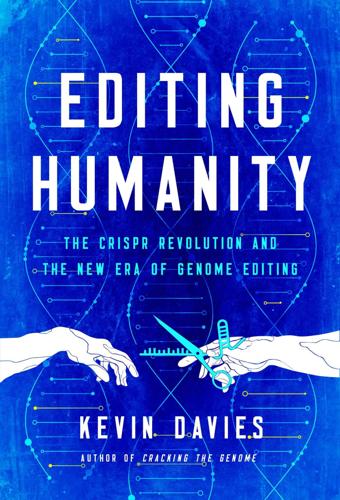
Editing Humanity: The CRISPR Revolution and the New Era of Genome Editing
by
Kevin Davies
Published 5 Oct 2020
Despite her rapidly growing profile, she wasn’t thinking about writing a book until she received a surprise invitation from Max Brockman, the son of a leading New York literary agent, John Brockman. Doudna’s initial proposal, co-written with graduate student Samuel Sternberg, was a little dry, with references to Thomas Kuhn’s The Structure of Scientific Revolutions. As Sternberg admitted later: “What kind of person on the street was going to read that?”9 But public interest was intensifying. That was driven home when Sternberg accepted an invitation to breakfast at a Mexican restaurant in Berkeley from a woman who asked if he would be interested in starting a company to deliver CRISPR gene editing to future parents.
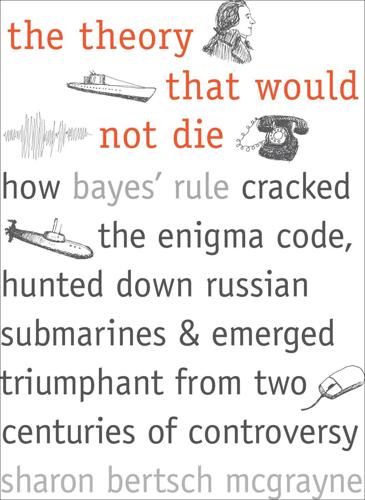
The Theory That Would Not Die: How Bayes' Rule Cracked the Enigma Code, Hunted Down Russian Submarines, and Emerged Triumphant From Two Centuries of Controversy
by
Sharon Bertsch McGrayne
Published 16 May 2011

Boyd: The Fighter Pilot Who Changed the Art of War
by
Robert Coram
Published 21 Nov 2002

Why the West Rules--For Now: The Patterns of History, and What They Reveal About the Future
by
Ian Morris
Published 11 Oct 2010

Misbehaving: The Making of Behavioral Economics
by
Richard H. Thaler
Published 10 May 2015
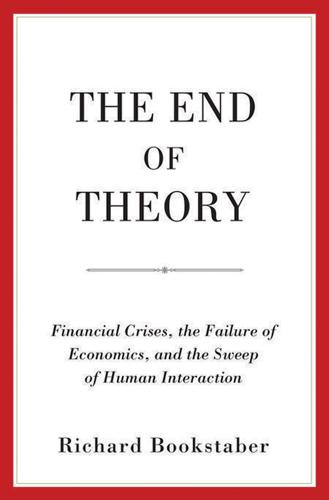
The End of Theory: Financial Crises, the Failure of Economics, and the Sweep of Human Interaction
by
Richard Bookstaber
Published 1 May 2017
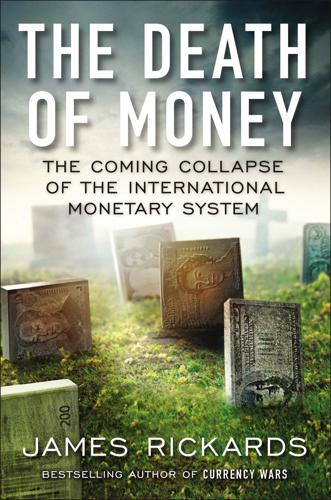
The Death of Money: The Coming Collapse of the International Monetary System
by
James Rickards
Published 7 Apr 2014

The Knowledge: How to Rebuild Our World From Scratch
by
Lewis Dartnell
Published 15 Apr 2014
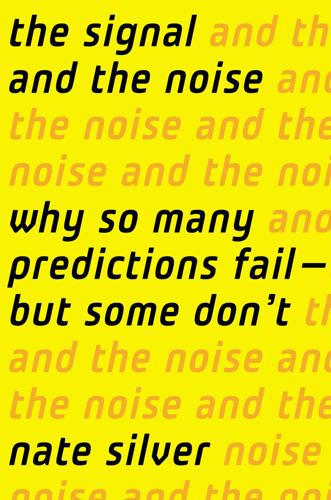
The Signal and the Noise: Why So Many Predictions Fail-But Some Don't
by
Nate Silver
Published 31 Aug 2012
Although there are several different formulations of the steps in the scientific method, this version is mostly drawn from “APPENDIX E: Introduction to the Scientific Method,” University of Rochester. http://teacher.pas.rochester.edu/phy_labs/appendixe/appendixe.html. 64. Thomas S. Kuhn, The Structure of Scientific Revolutions (Chicago: University of Chicago Press, Kindle edition). 65. Jacob Cohen, “The Earth Is Round (p<.05),” American Psychologist, 49, 12 (December 1994), pp. 997–1003. http://ist-socrates.berkeley.edu/~maccoun/PP279_Cohen1.pdf. 66. Jeff Gill, “The Insignificance of Null Hypothesis Significance Testing,” Political Research Quarterly, 52, 3 (September 1999), pp. 647–674. http://www.artsci.wustl.edu/~jgill/papers/hypo.pdf. 67.

Code Complete (Developer Best Practices)
by
Steve McConnell
Published 8 Jun 2004

The Irrational Economist: Making Decisions in a Dangerous World
by
Erwann Michel-Kerjan
and
Paul Slovic
Published 5 Jan 2010
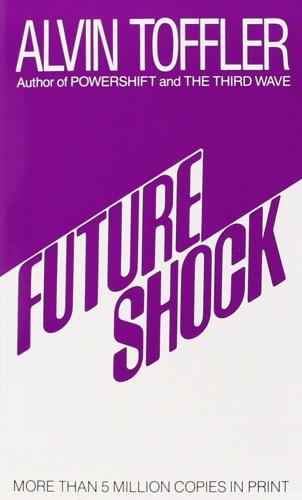
Future Shock
by
Alvin Toffler
Published 1 Jun 1984

The Rise of the Network Society
by
Manuel Castells
Published 31 Aug 1996
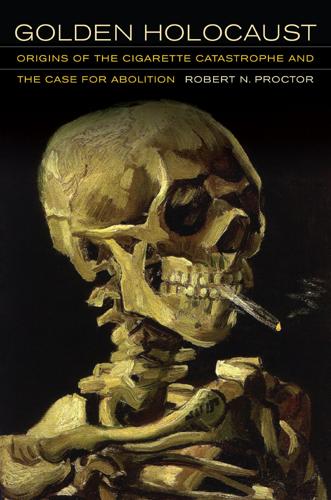
Golden Holocaust: Origins of the Cigarette Catastrophe and the Case for Abolition
by
Robert N. Proctor
Published 28 Feb 2012
HARVEY GRAHAM, SMOKING—THE FACTS, PUBLISHED BY THE BRITISH MEDICAL JOURNAL ASSOCIATION, 1957 We like to think of scientific knowledge as cumulative, that ideas once established as true cannot be undone. But the reality is that facts can come undone, there is forgetfulness, and not every good thing flourishes. That was part of the insight of Thomas Kuhn’s great Structure of Scientific Revolutions: our views of the world change not so much by steady pilings-on of fact but rather by gestalt shifts in how we see the world. Science advances by leaping over the canyons of dried-up ideas, which also means that a certain kind of forgetting—or unlearning—is key to any scientific change.
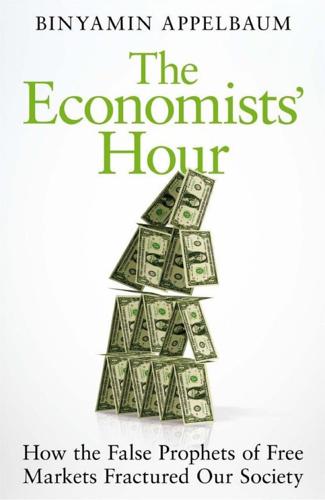
The Economists' Hour: How the False Prophets of Free Markets Fractured Our Society
by
Binyamin Appelbaum
Published 4 Sep 2019
Macmillan was sympathetic to Keynes; his family’s publishing firm, Macmillan, was the British publisher of Keynes’s works. 60. The document is commonly known as the Radcliffe Report. See Report of the Committee on the Working of the Monetary System (London: HMSO, 1959), 489. 61. Thomas Kuhn’s classic book, The Structure of Scientific Revolutions (Chicago: University of Chicago Press, 1962), concluded that adherents of a scientific paradigm rarely change their minds. A new paradigm instead takes hold as the older generation is replaced. 62. Paul Douglas, a leading professor of economics at the University of Chicago, was elected to the U.S.
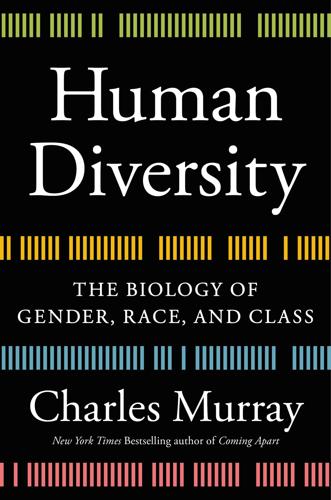
Human Diversity: The Biology of Gender, Race, and Class
by
Charles Murray
Published 28 Jan 2020

Basic Economics
by
Thomas Sowell
Published 1 Jan 2000
{1012} John Kenneth Galbraith, American Capitalism (White Plains, NY: M.E. Sharpe, Inc., 1980), p. 68. {1013} Herbert Stein, Presidential Economics, second edition (Washington: American Enterprise Institute, 1988), p. 113. {1014} Thomas Sowell, “Samuel Bailey Revisited,” Economica, November 1970, pp. 402–408. {1015} Thomas S. Kuhn, The Structure of Scientific Revolutions, second edition (Chicago: University of Chicago Press, 1970), p. 17. {1016} Jacob Viner, The Long View and the Short: Studies in Economic Theory and Policy (Glencoe, IL: Free Press, 1958), p. 79. {1017} Karl Marx, Capital, Volume III, pp. 310–311; Karl Marx, “Wage Labour and Capital,” Karl Marx and Frederick Engels, Selected Works (Moscow: Foreign Languages Publishing House, 1955), Volume I, Section V, p. 99
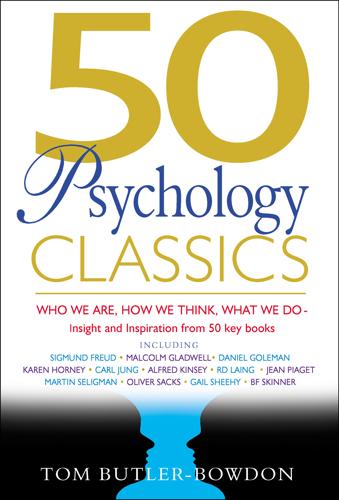
50 Psychology Classics
by
Tom Butler-Bowdon
Published 14 Oct 2007
To survive, to be social, to mate, we need to have the experience of being an autonomous being who is in charge. However, the part of us that is in charge is in fact only a small part of our whole being; the rest carries on automatically, zombie like. Weird and wonderful cases Ramachandran refers to Thomas Kuhn and his landmark book The Structure of Scientific Revolutions, which noted that science tends to sweep the unusual cases under the carpet until they can be fitted into established theories. But Ramachandran’s view turns this on its head: We can get closer to generalities by solving the strange cases. Consider just three he discusses: Hemi-neglect patients are indifferent to objects and events in the left side of the world, sometimes even indifferent to the left side of their own bodies.
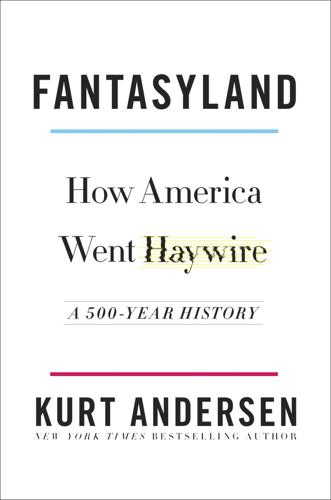
Fantasyland: How America Went Haywire: A 500-Year History
by
Kurt Andersen
Published 4 Sep 2017
In 1961 the French philosopher Michel Foucault published Madness and Civilization, echoing the new skepticism of the concept of mental illness, and by the 1970s he argued that rationality itself is a coercive “regime of truth,” oppression by other means. Foucault’s suspicion of reason became deeply and widely embedded in American academia. The following year a young UC Berkeley professor of science history, Thomas Kuhn, published a groundbreaking book called The Structure of Scientific Revolutions. In the way of Szasz and Laing, psychiatrists discrediting psychiatry, Kuhn had trained as a physicist. His book was not polemical like the antipsychiatrists’, much broader in scope, both a popular bestseller and one of the most intellectually influential books of the age.
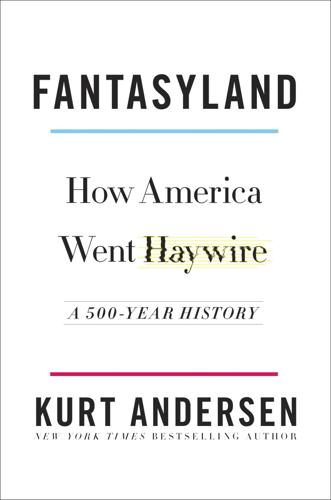
Fantasyland
by
Kurt Andersen
Published 5 Sep 2017
In 1961 the French philosopher Michel Foucault published Madness and Civilization, echoing the new skepticism of the concept of mental illness, and by the 1970s he argued that rationality itself is a coercive “regime of truth,” oppression by other means. Foucault’s suspicion of reason became deeply and widely embedded in American academia. The following year a young UC Berkeley professor of science history, Thomas Kuhn, published a groundbreaking book called The Structure of Scientific Revolutions. In the way of Szasz and Laing, psychiatrists discrediting psychiatry, Kuhn had trained as a physicist. His book was not polemical like the antipsychiatrists’, much broader in scope, both a popular bestseller and one of the most intellectually influential books of the age.
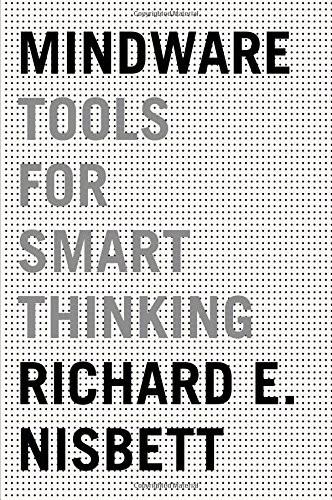
Mindware: Tools for Smart Thinking
by
Richard E. Nisbett
Published 17 Aug 2015
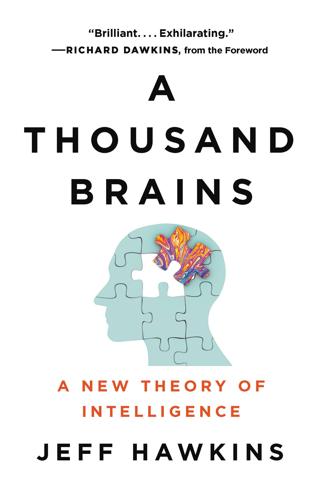
A Thousand Brains: A New Theory of Intelligence
by
Jeff Hawkins
Published 15 Nov 2021

Superintelligence: Paths, Dangers, Strategies
by
Nick Bostrom
Published 3 Jun 2014
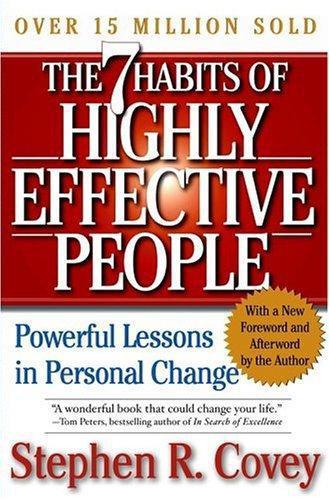
The 7 Habits of Highly Effective People: Powerful Lessons in Personal Change
by
Stephen R. Covey
Published 9 Nov 2004
experience when someone finally "sees" the composite picture in another way. The more bound a person is by the initial perception, the more powerful the" Aha!" experience is. It's as though a light were suddenly turned on inside. The term paradigm shift was introduced by Thomas Kuhn in his highly influential landmark book, The Structure of Scientific Revolutions. Kuhn shows how almost every significant breakthrough in the field of scientific endeavor is. first a break with tradition, with old ways of thinking, with old paradigms. For Ptolemy, the great Egyptian astronomer, the earth was the center of the universe.

Black Box Thinking: Why Most People Never Learn From Their Mistakes--But Some Do
by
Matthew Syed
Published 3 Nov 2015
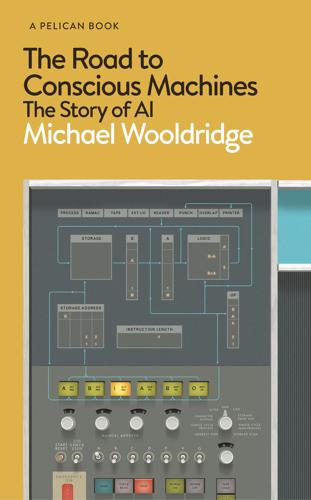
The Road to Conscious Machines
by
Michael Wooldridge
Published 2 Nov 2018

Lifespan: Why We Age—and Why We Don't Have To
by
David A. Sinclair
and
Matthew D. Laplante
Published 9 Sep 2019
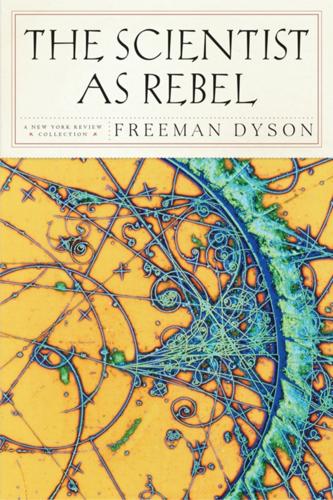
The Scientist as Rebel
by
Freeman Dyson
Published 1 Jan 2006
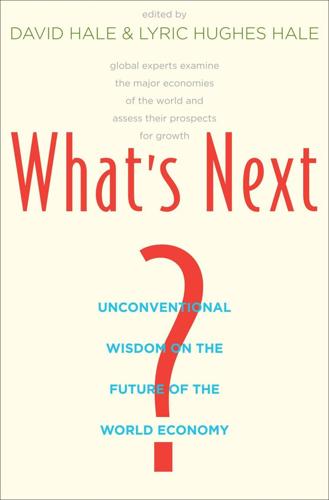
What's Next?: Unconventional Wisdom on the Future of the World Economy
by
David Hale
and
Lyric Hughes Hale
Published 23 May 2011
Often seen as a center of radical Islam, Iran is also the birthplace of the Reformist Movement of Islam (led by the recently deceased Grand Ayatollah Montazeri), which moves beyond textual literalism and posits democracy, human rights, and nonviolence as central to the societal affairs of Muslims. A Modern Iran, at Last In the late 1970s the philosopher Thomas Kuhn coined the phrase “paradigm shift” in his seminal book The Structure of Scientific Revolutions. He was referring to the phenomena of scientists detecting a need to change their underlying presumptions and worldviews in order to better explain (instead of discarding) surprising experimental results. Arguably, a similar phenomenon is under way that is changing global perceptions of Iranian society.
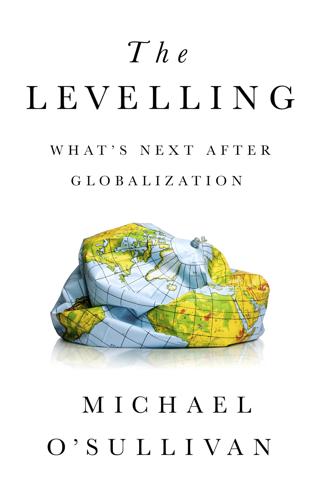
The Levelling: What’s Next After Globalization
by
Michael O’sullivan
Published 28 May 2019
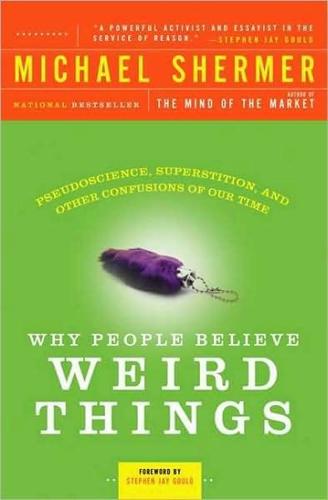
Why People Believe Weird Things: Pseudoscience, Superstition, and Other Confusions of Our Time
by
Michael Shermer
Published 1 Jan 1997

Capitalism 4.0: The Birth of a New Economy in the Aftermath of Crisis
by
Anatole Kaletsky
Published 22 Jun 2010
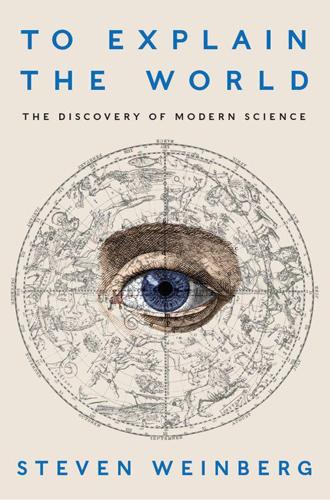
To Explain the World: The Discovery of Modern Science
by
Steven Weinberg
Published 17 Feb 2015

Possiplex
by
Ted Nelson
Published 2 Jan 2010

Coming of Age in the Milky Way
by
Timothy Ferris
Published 30 Jun 1988